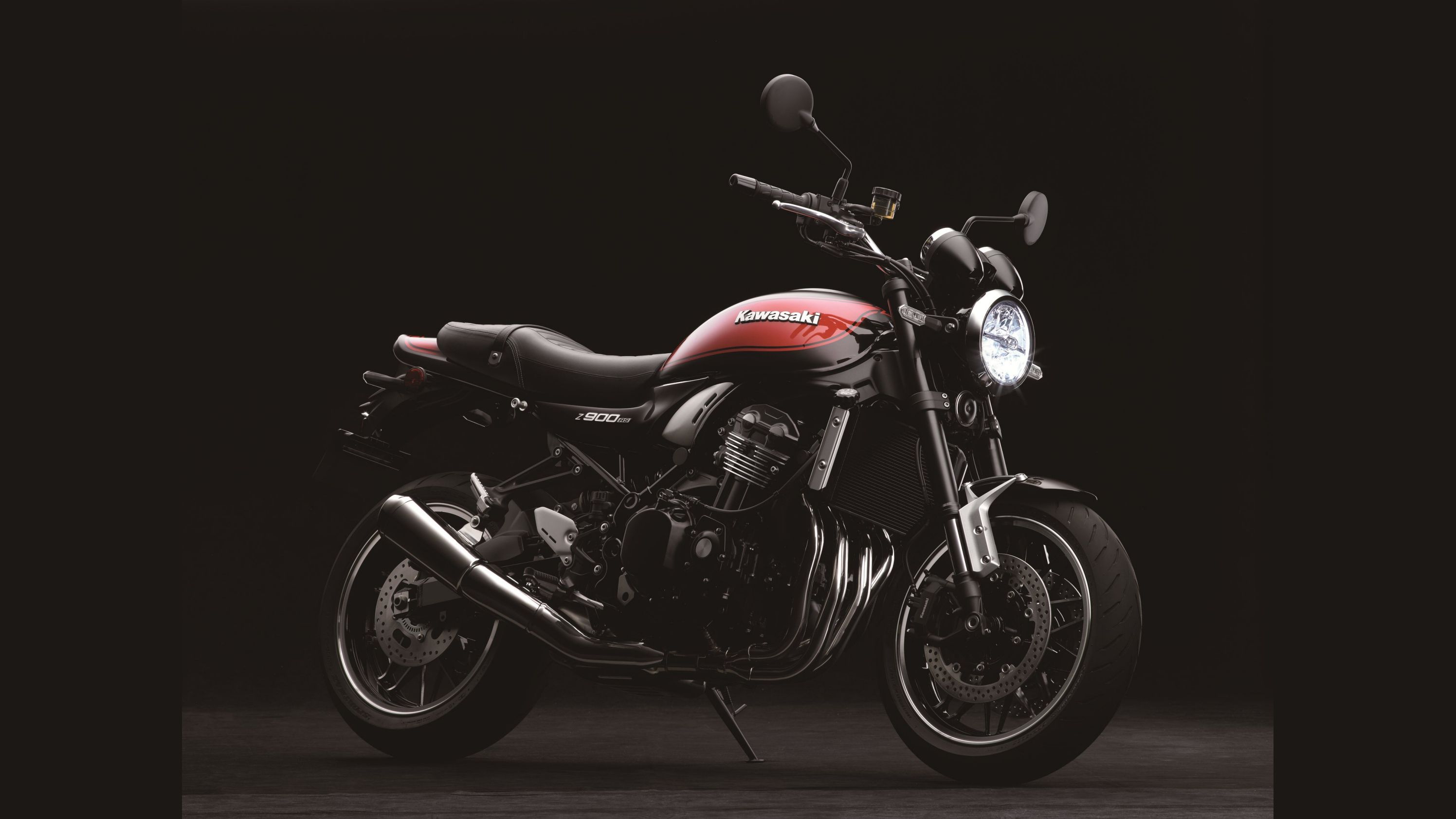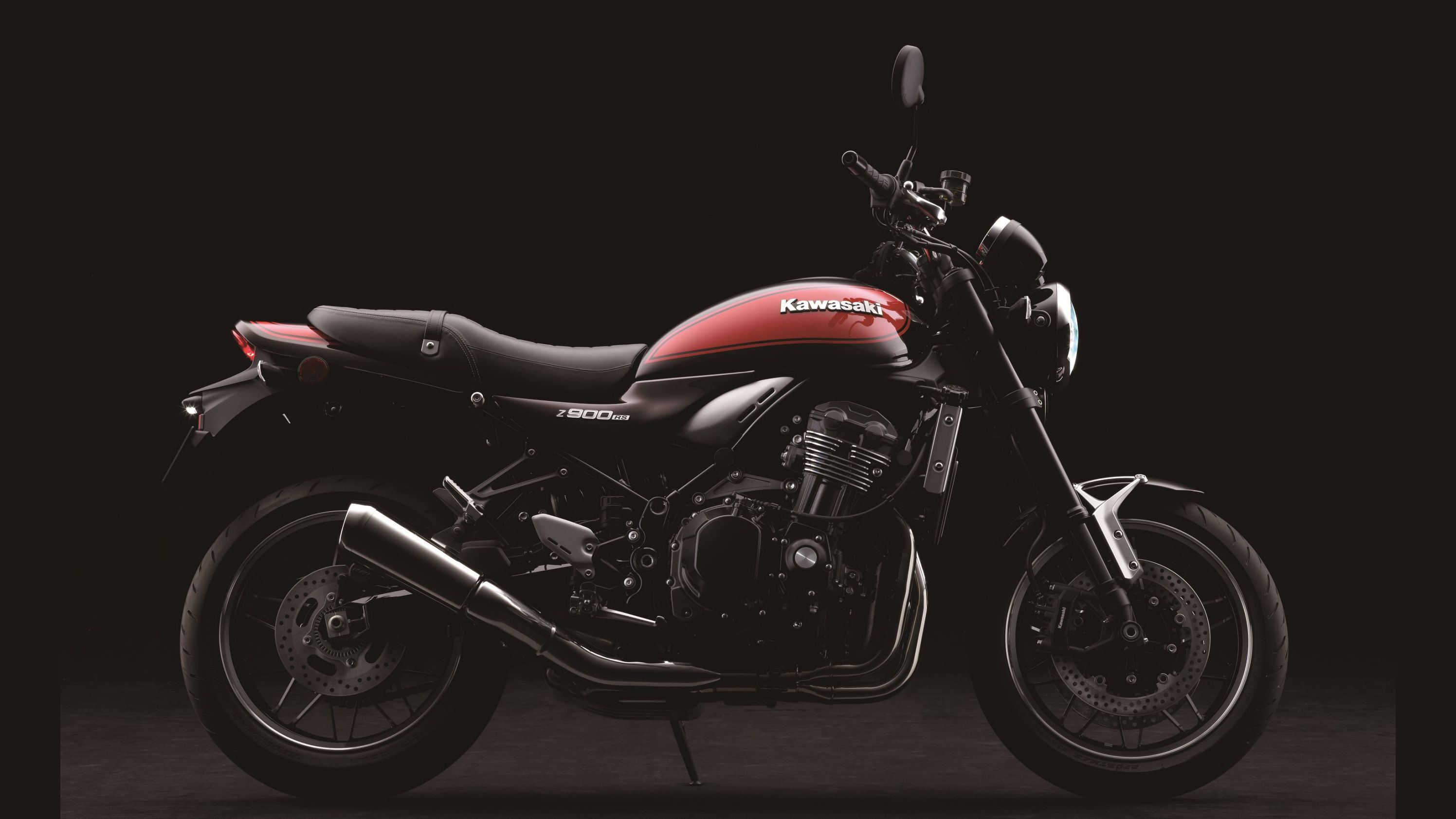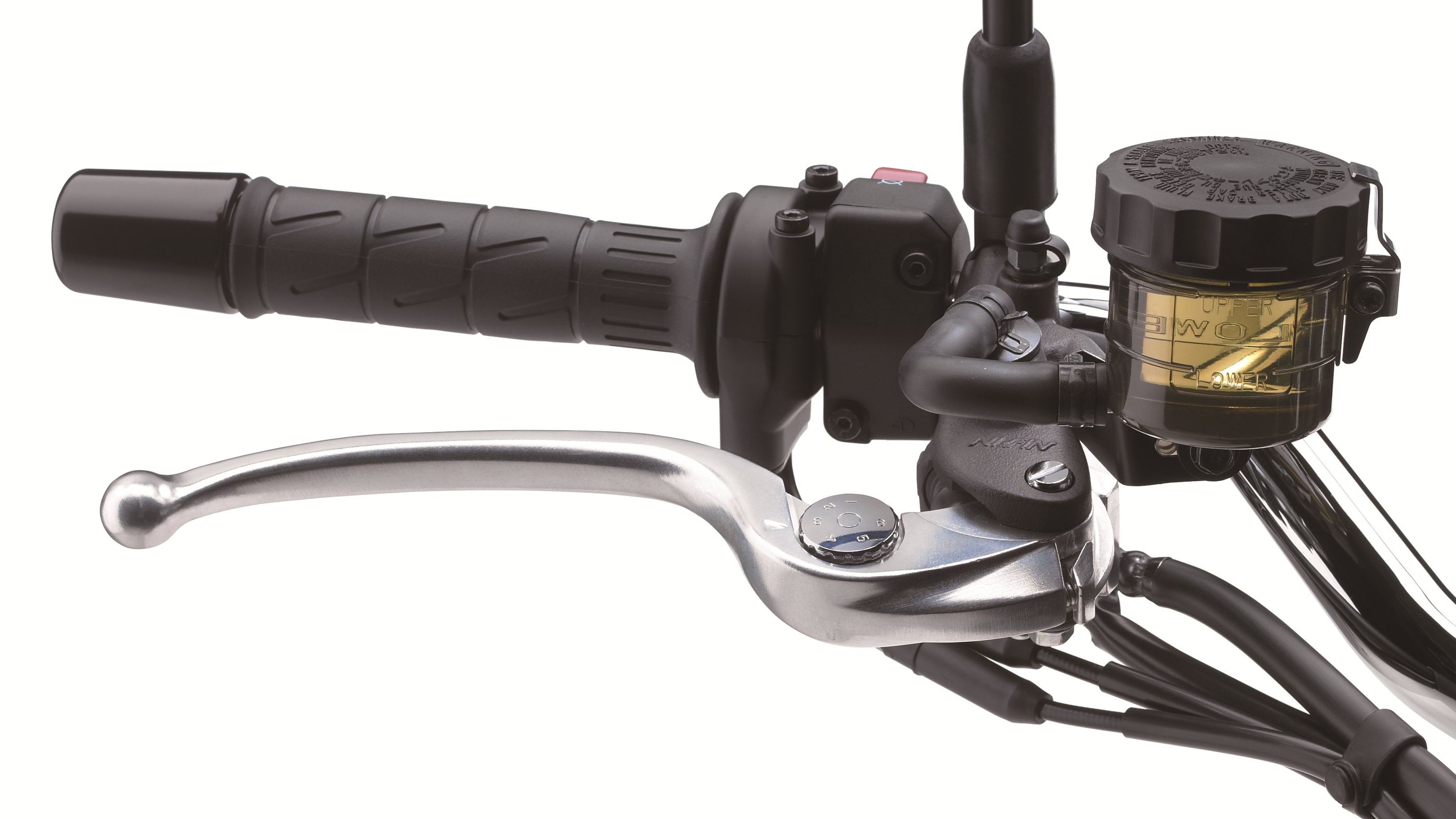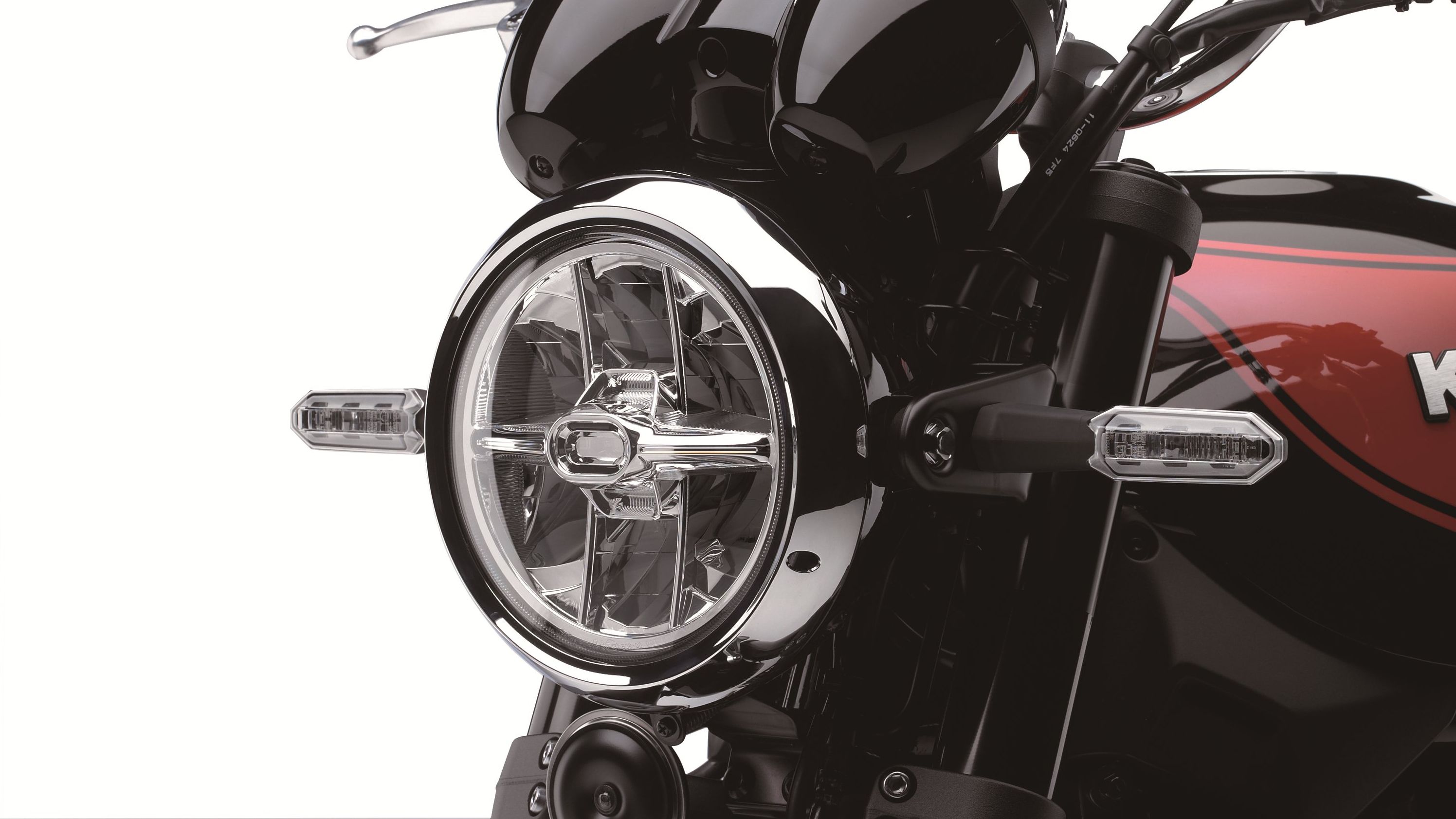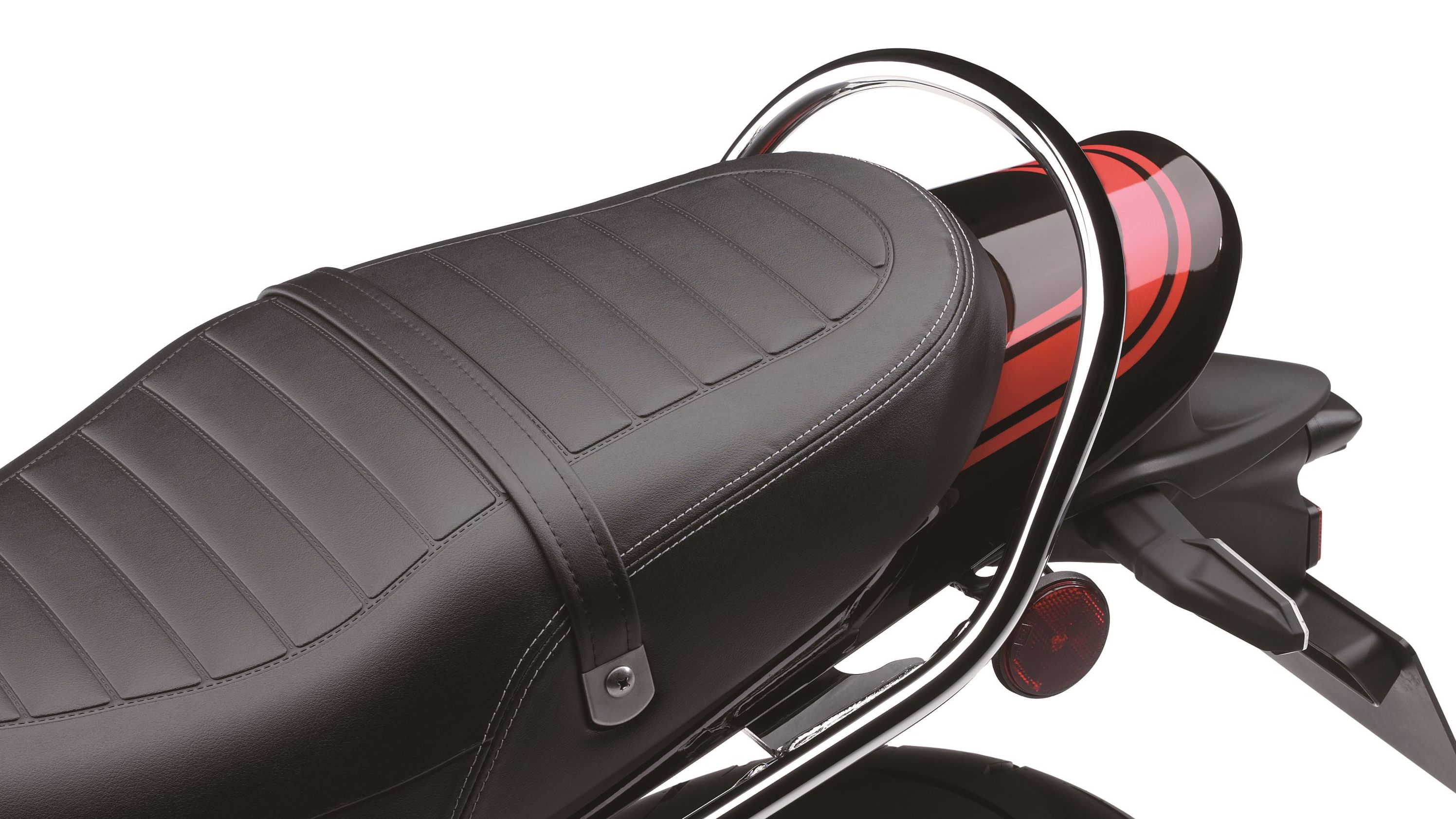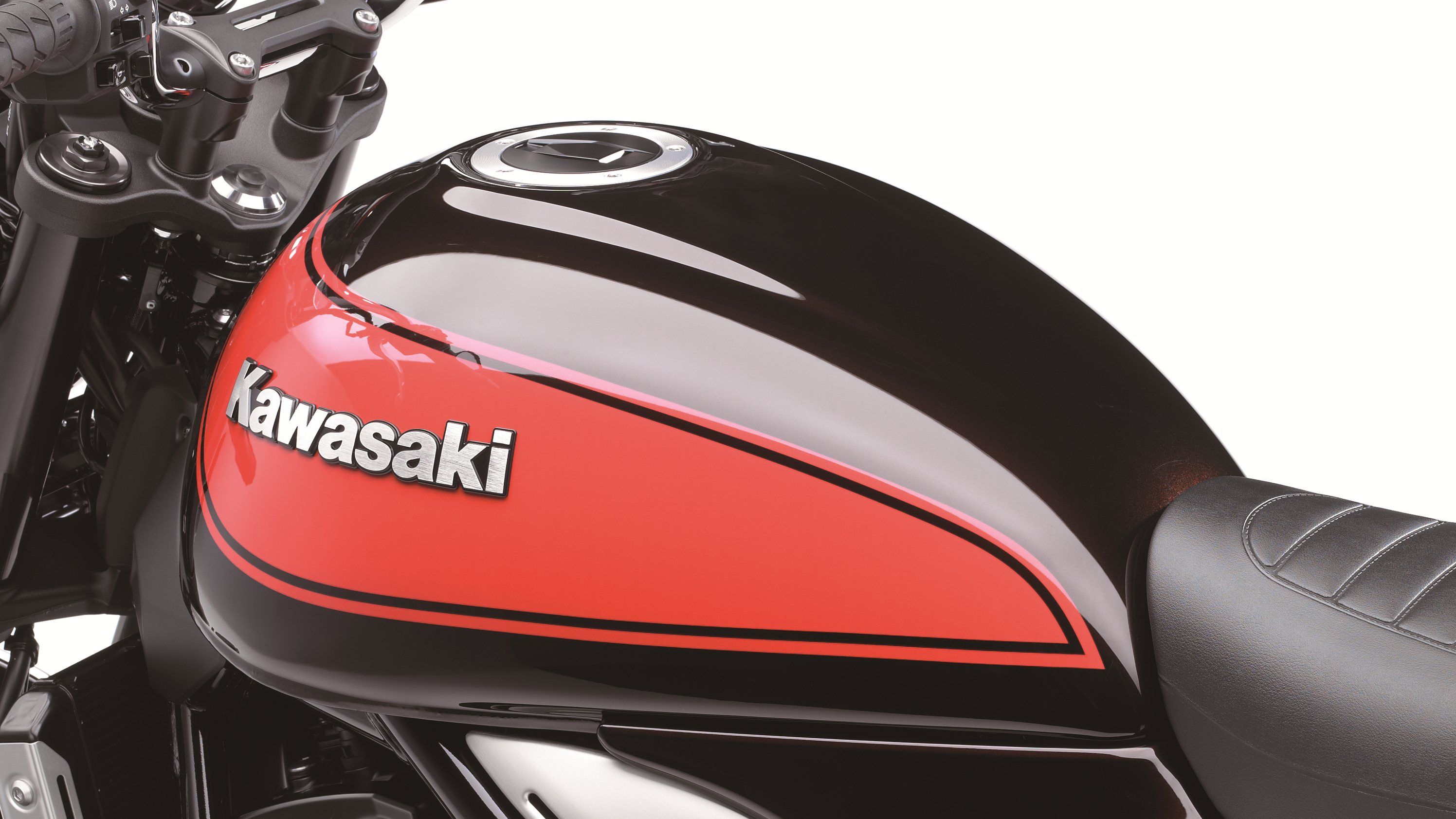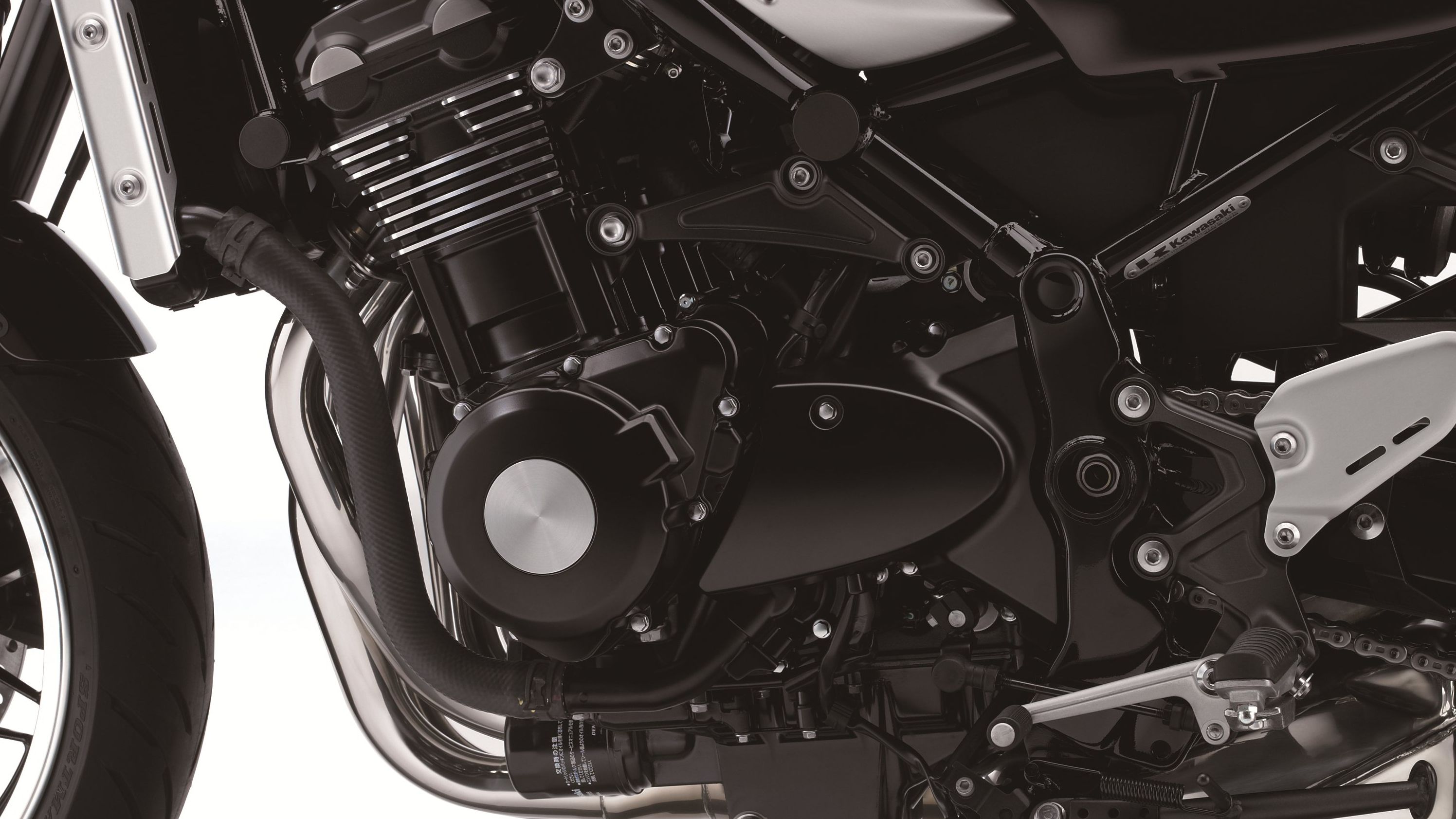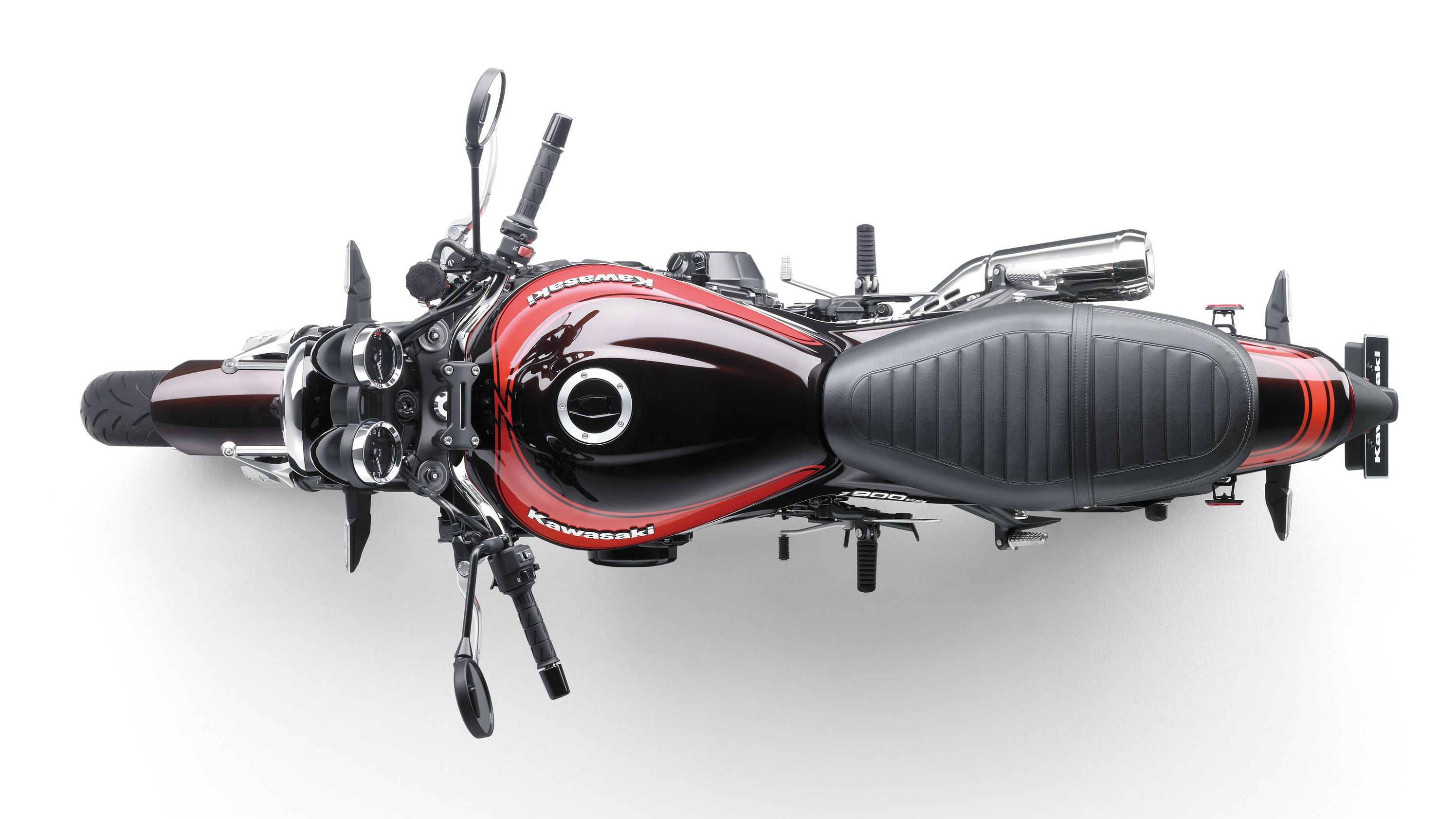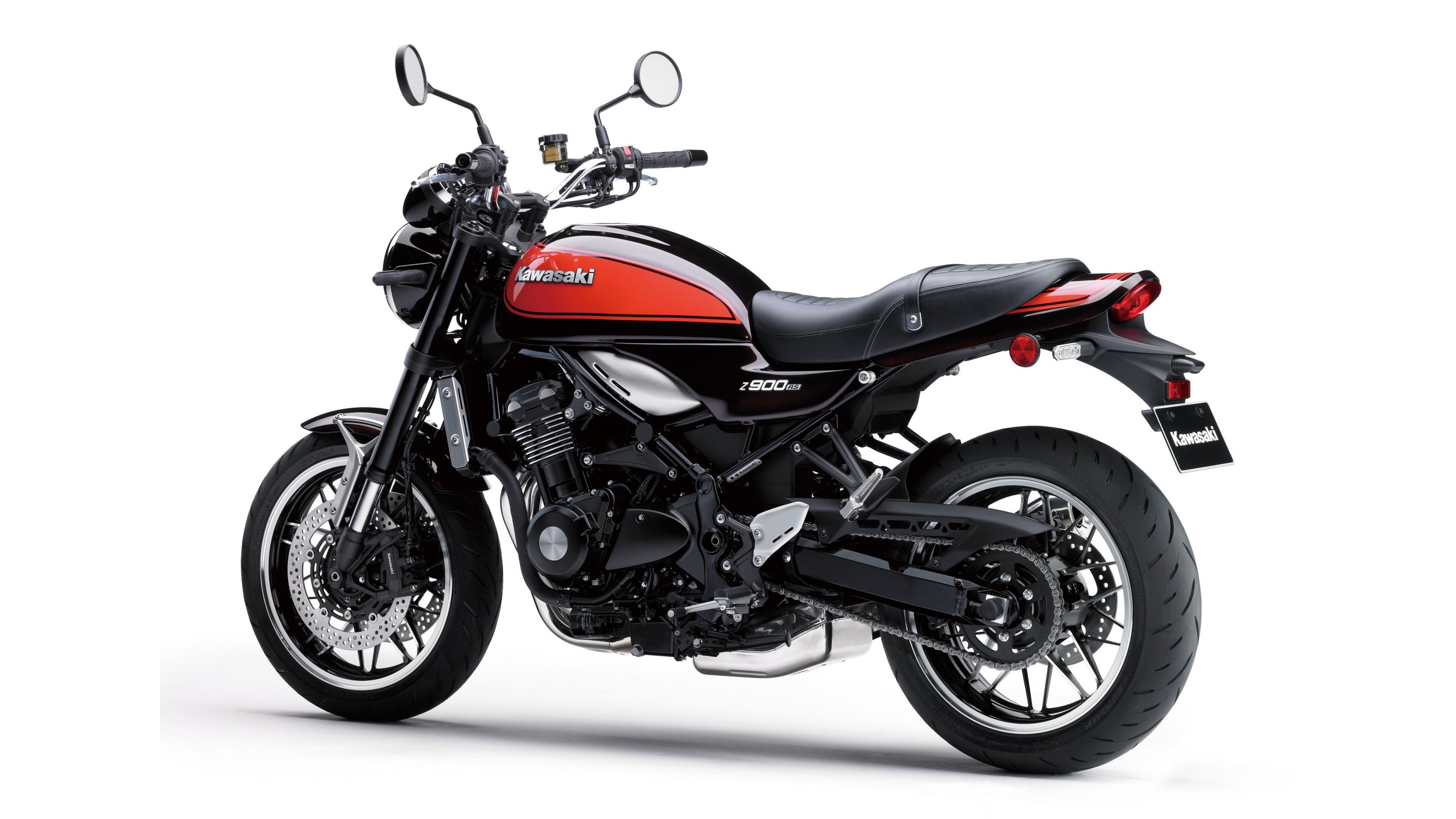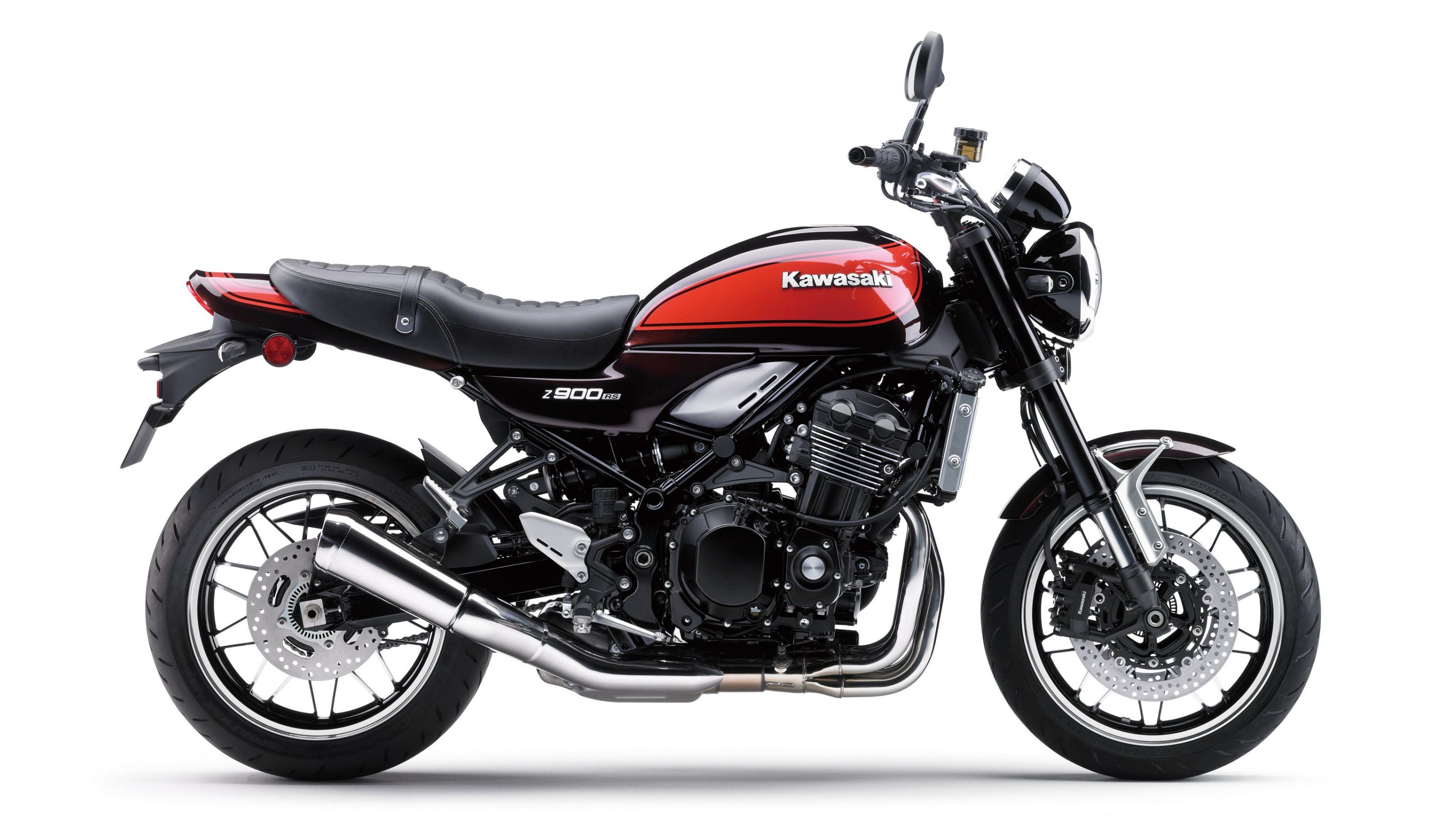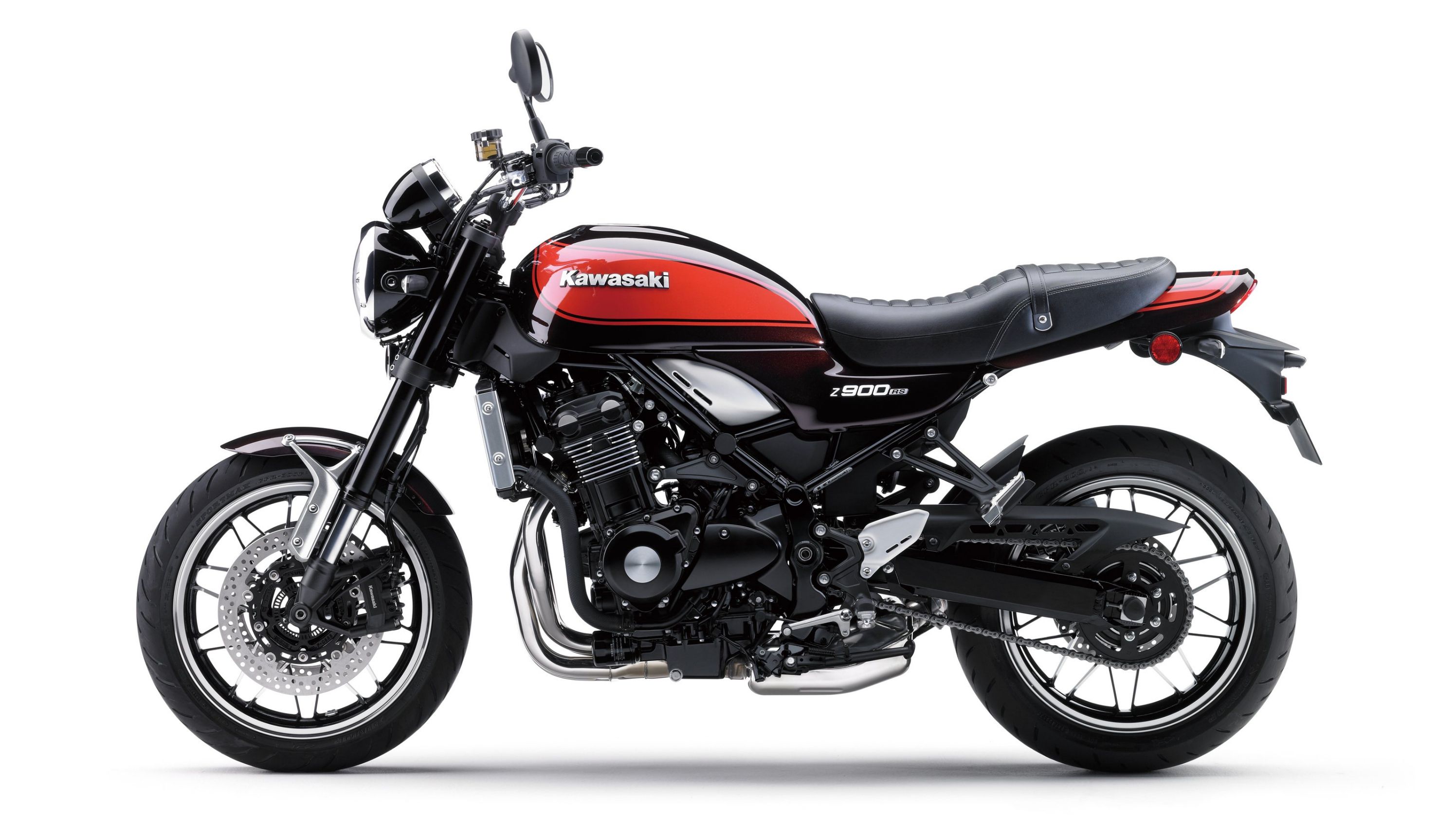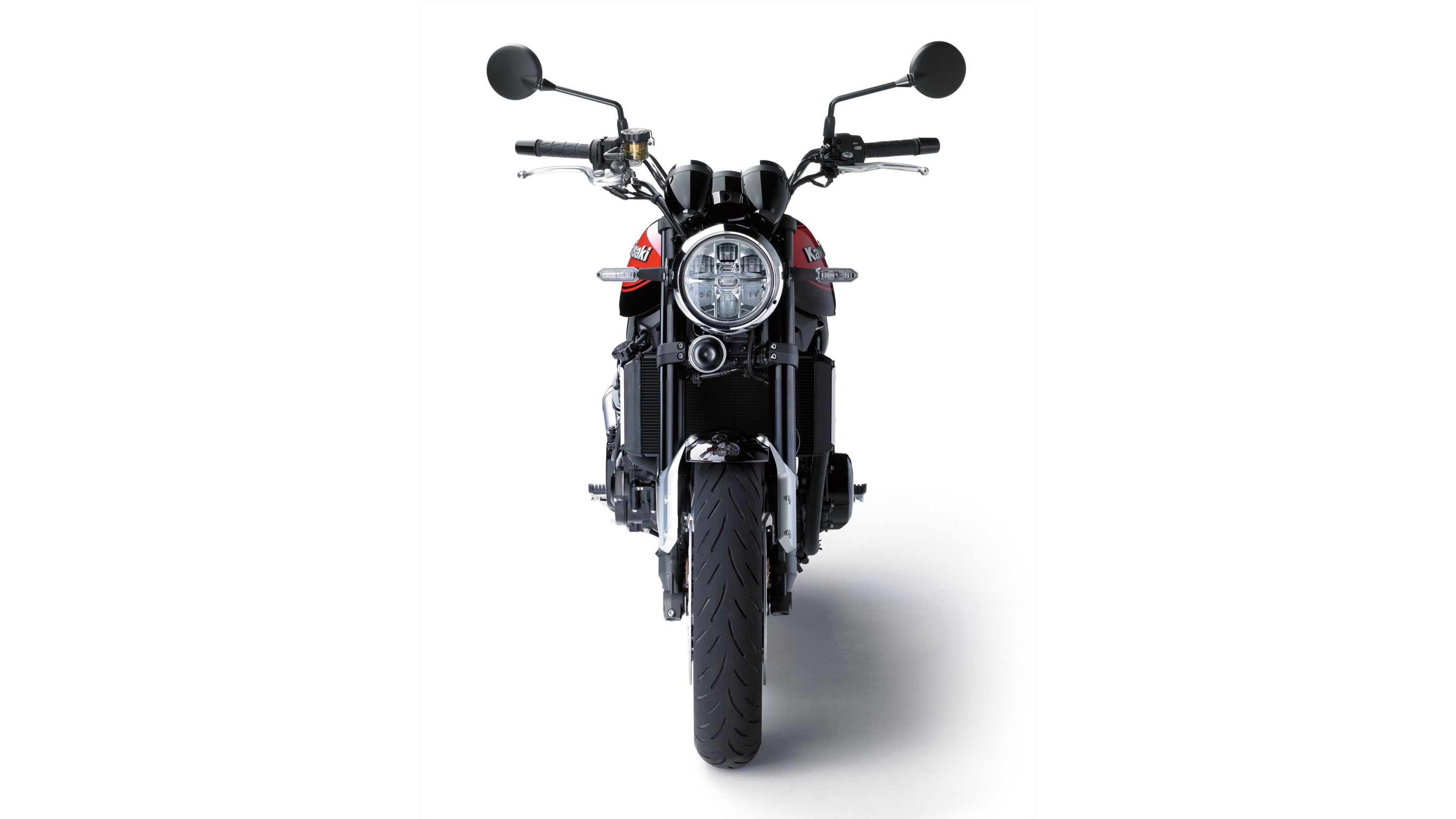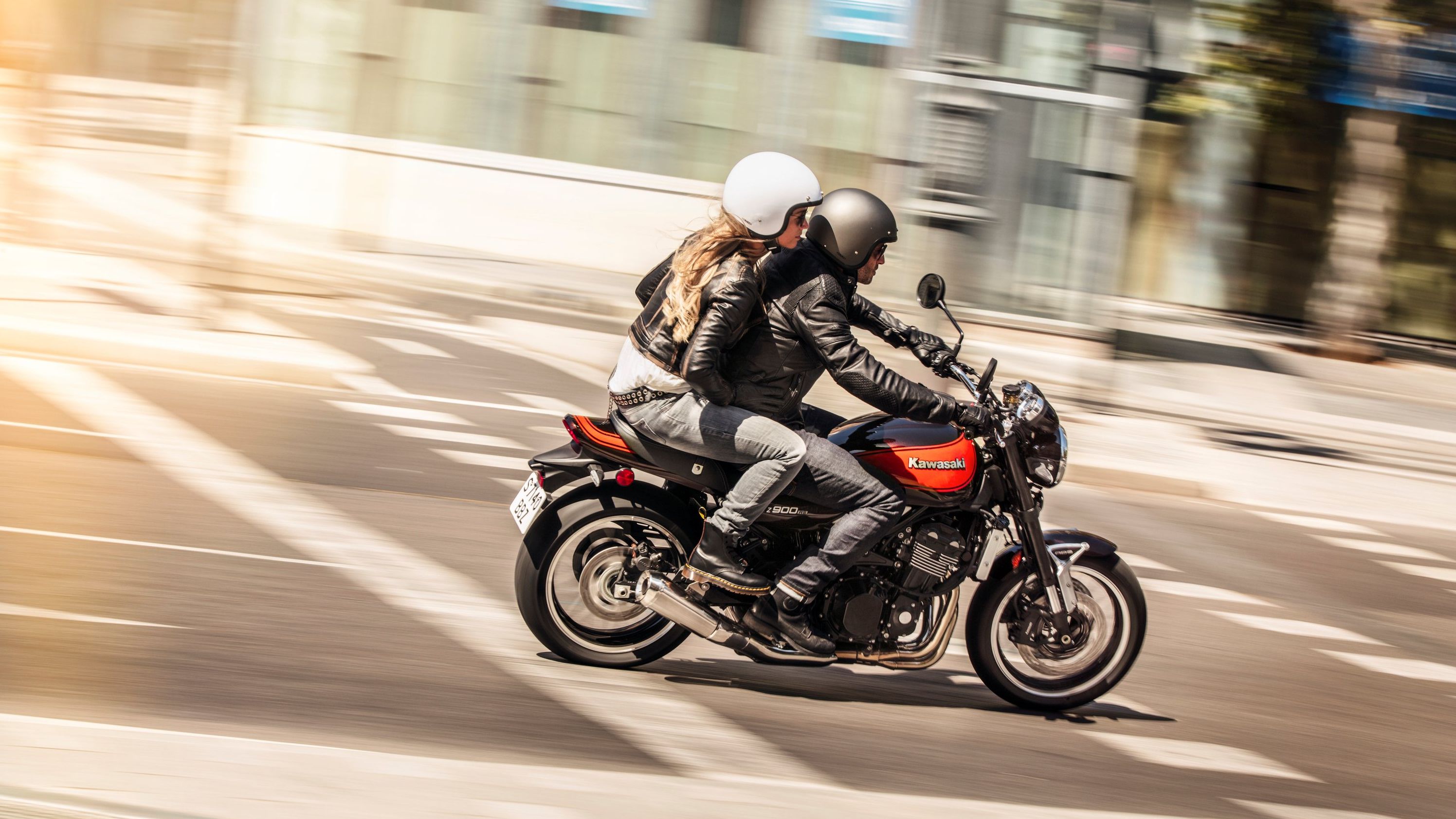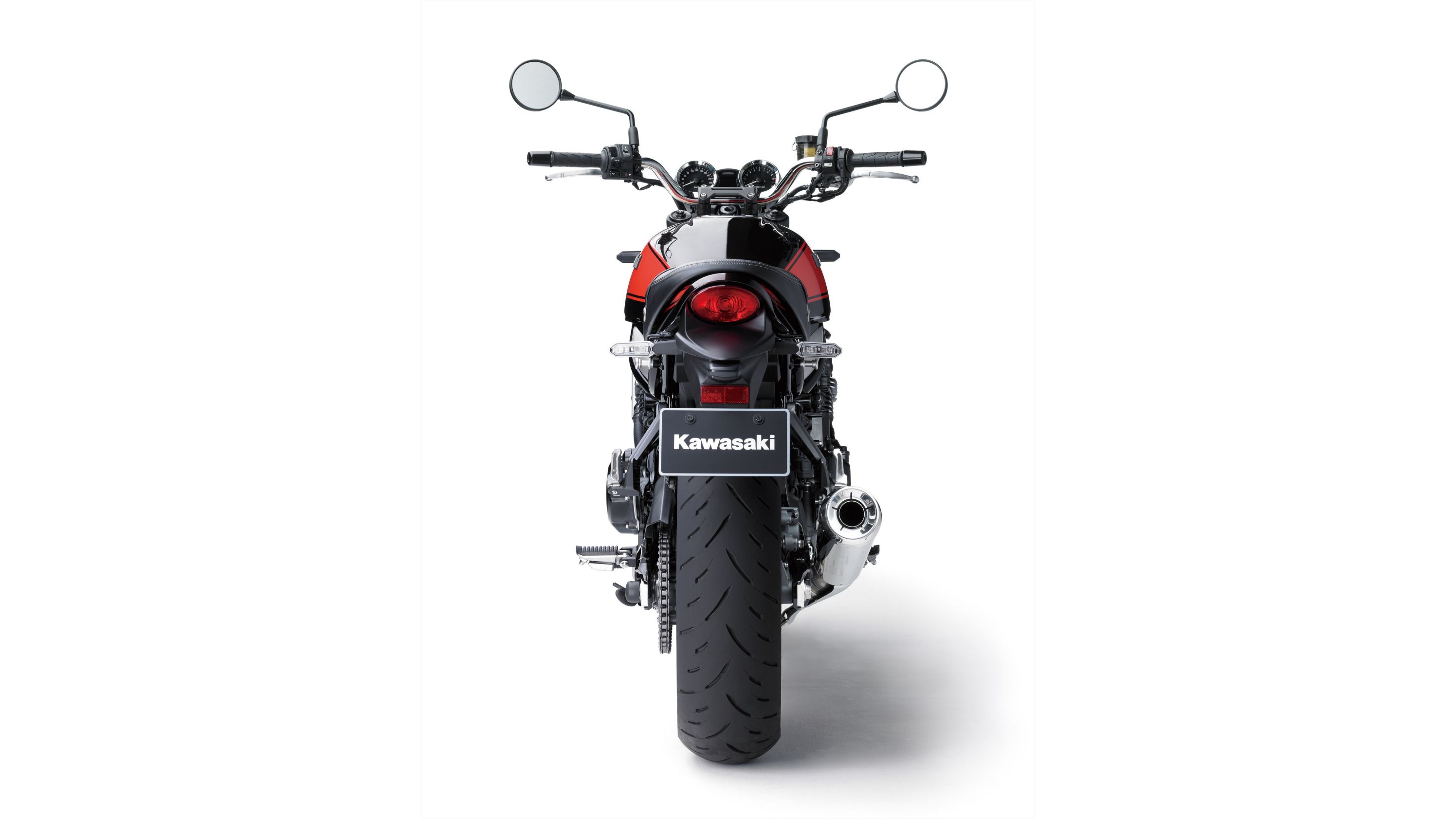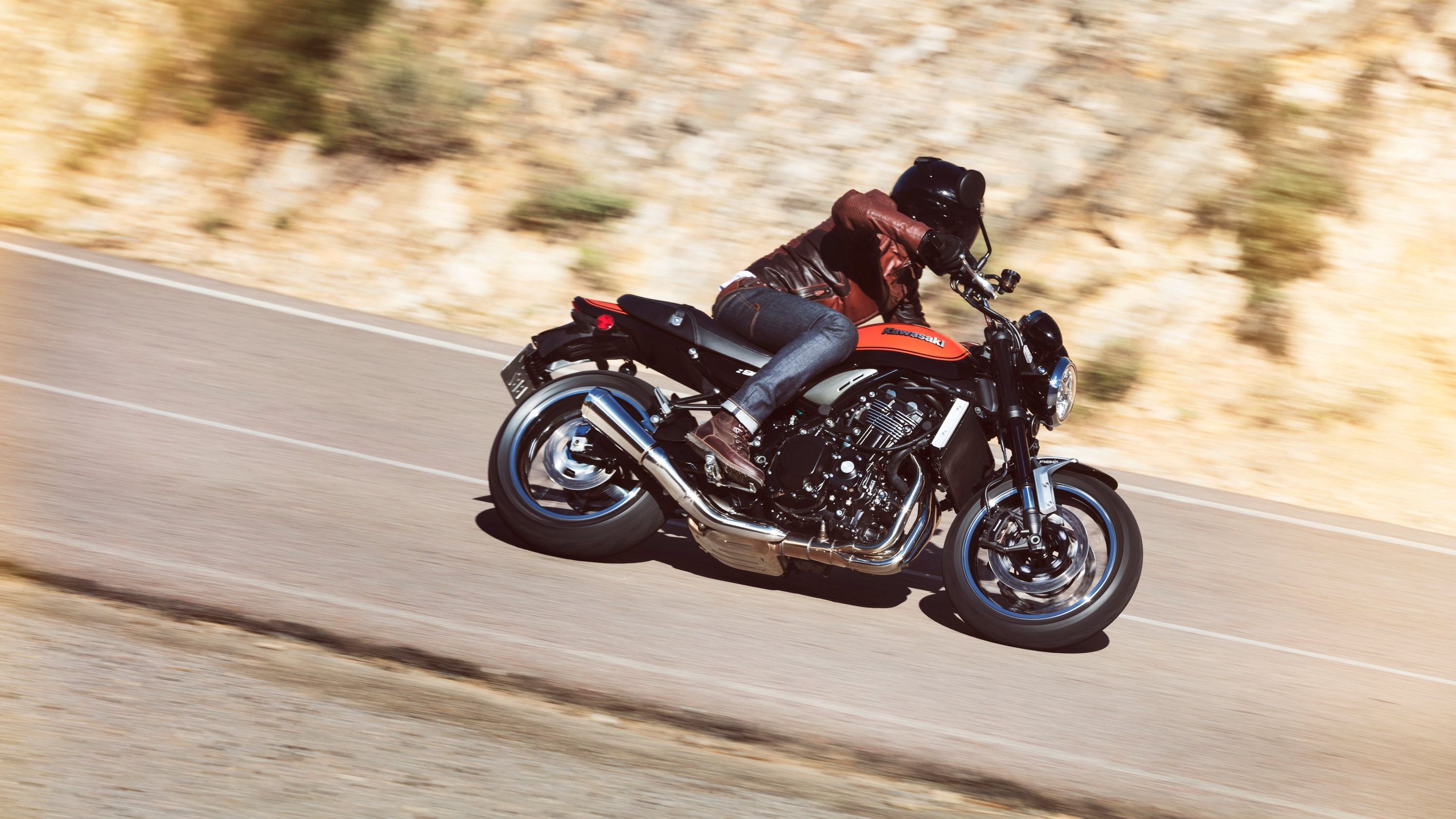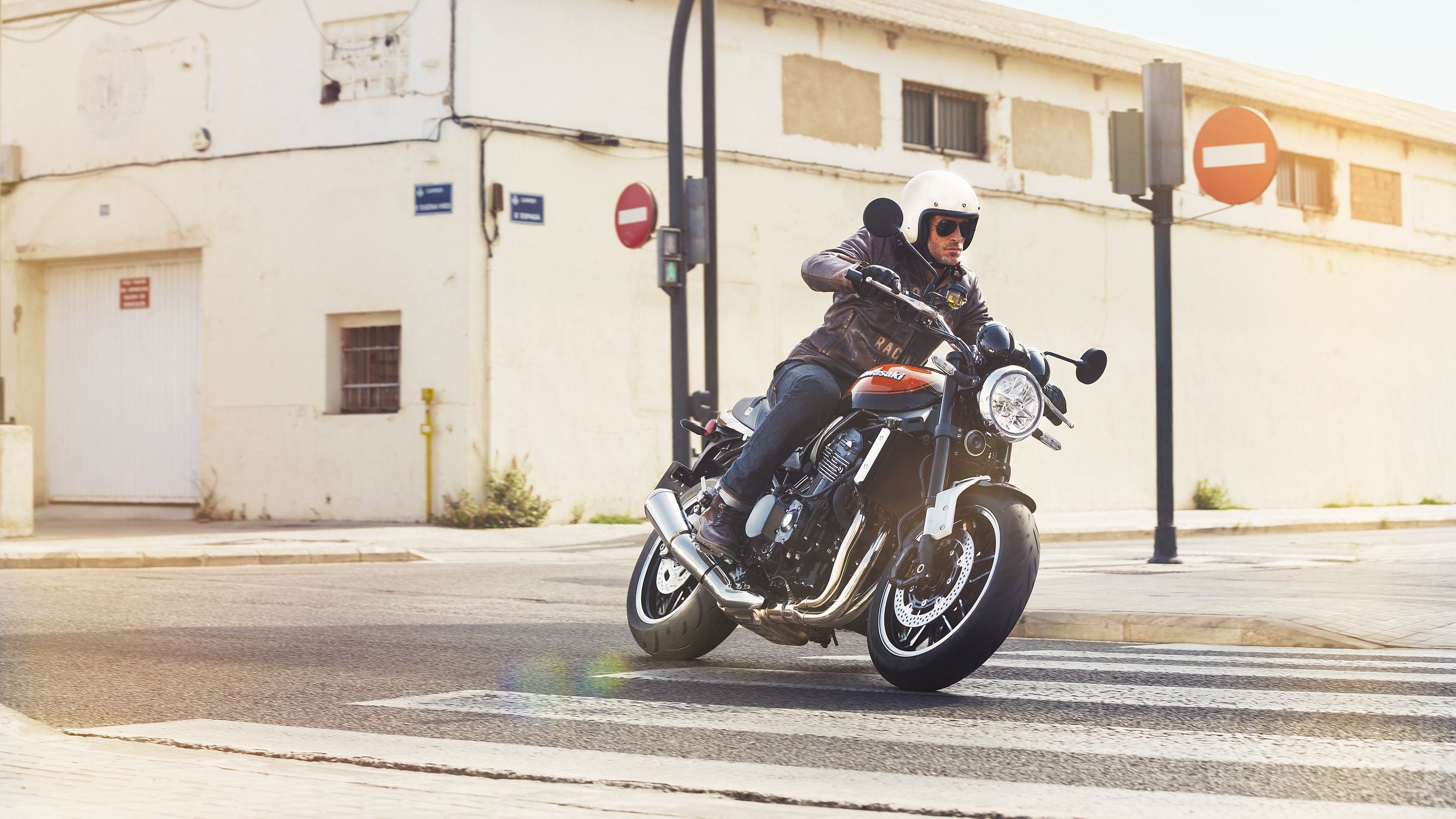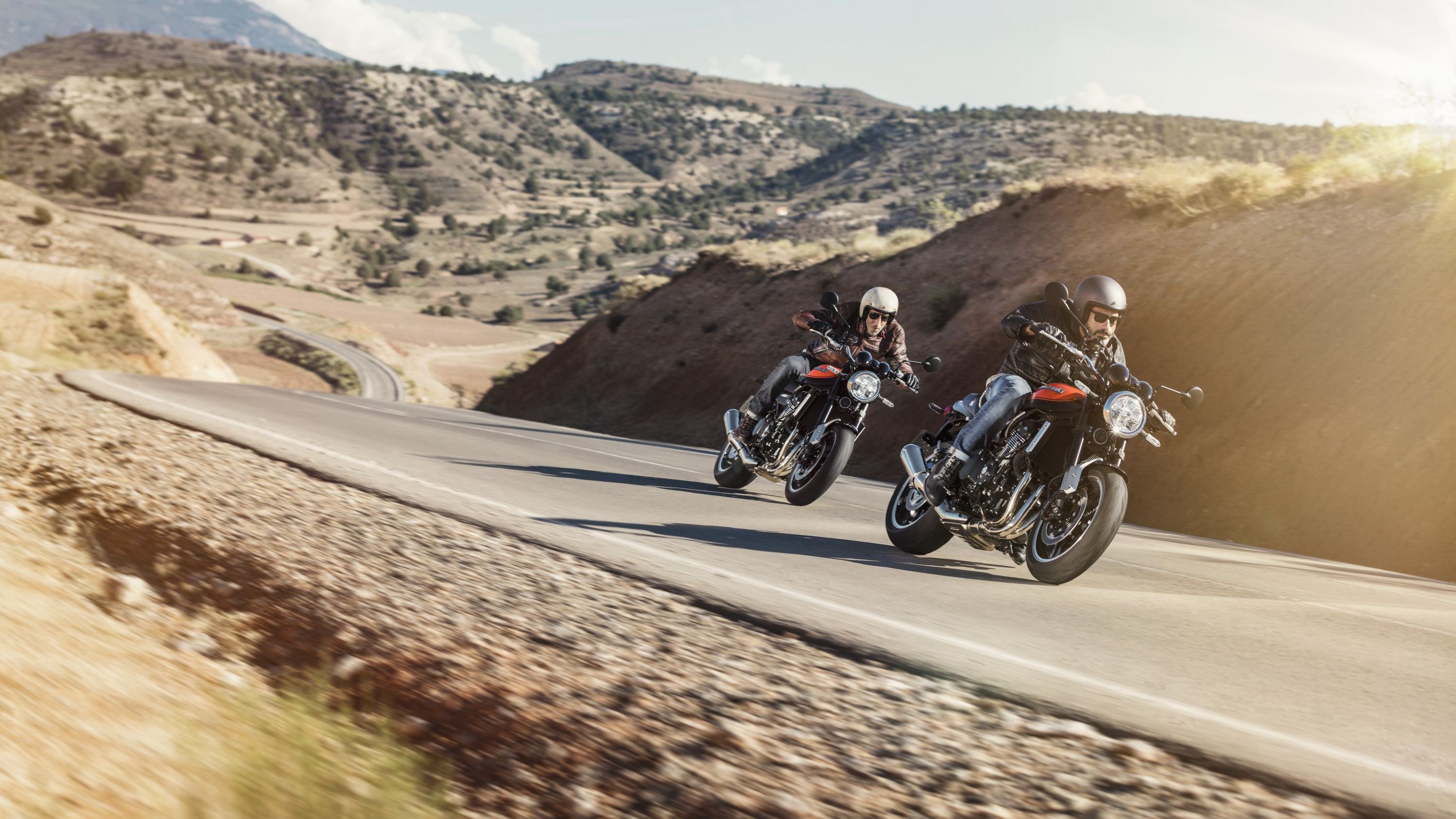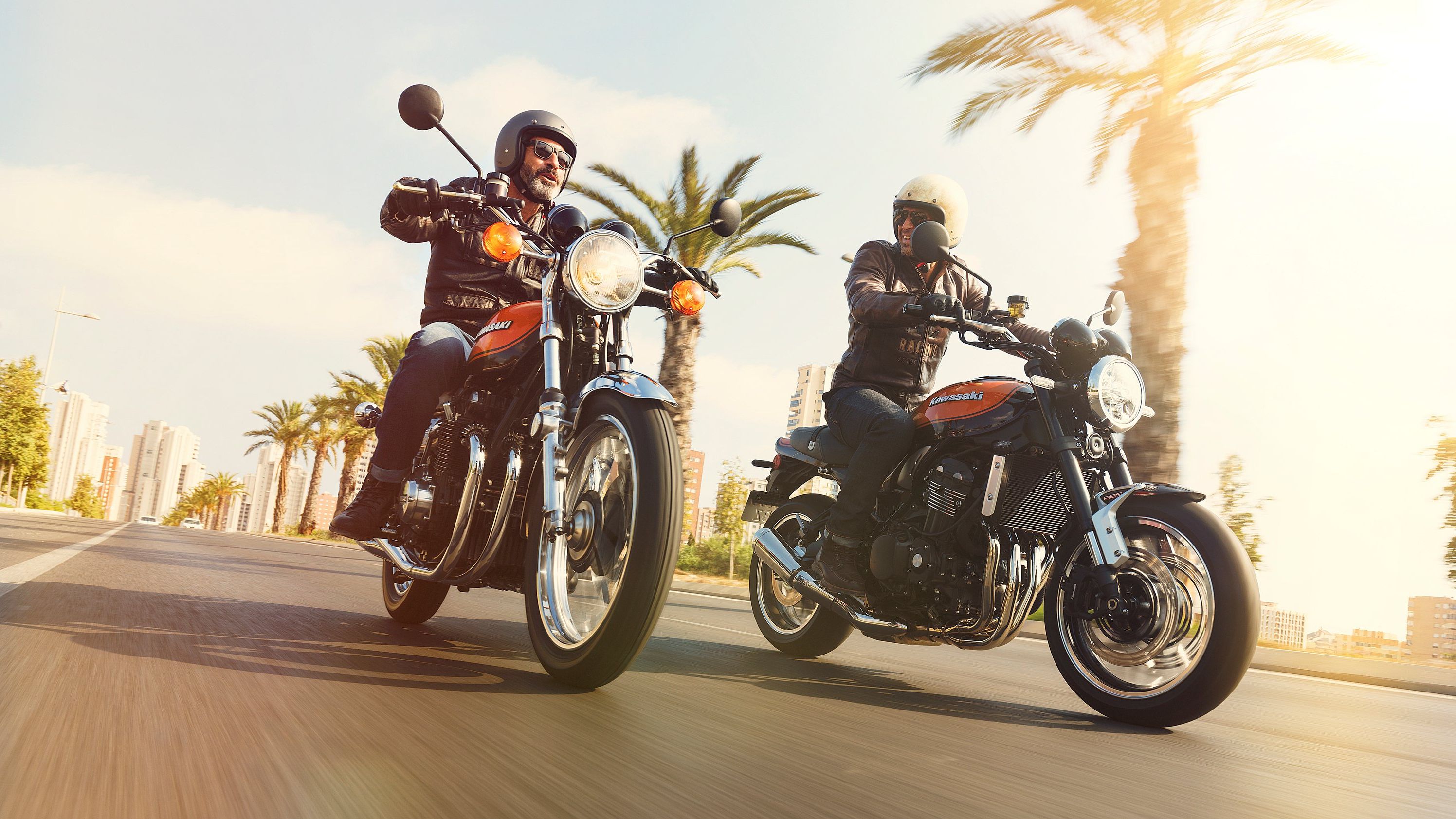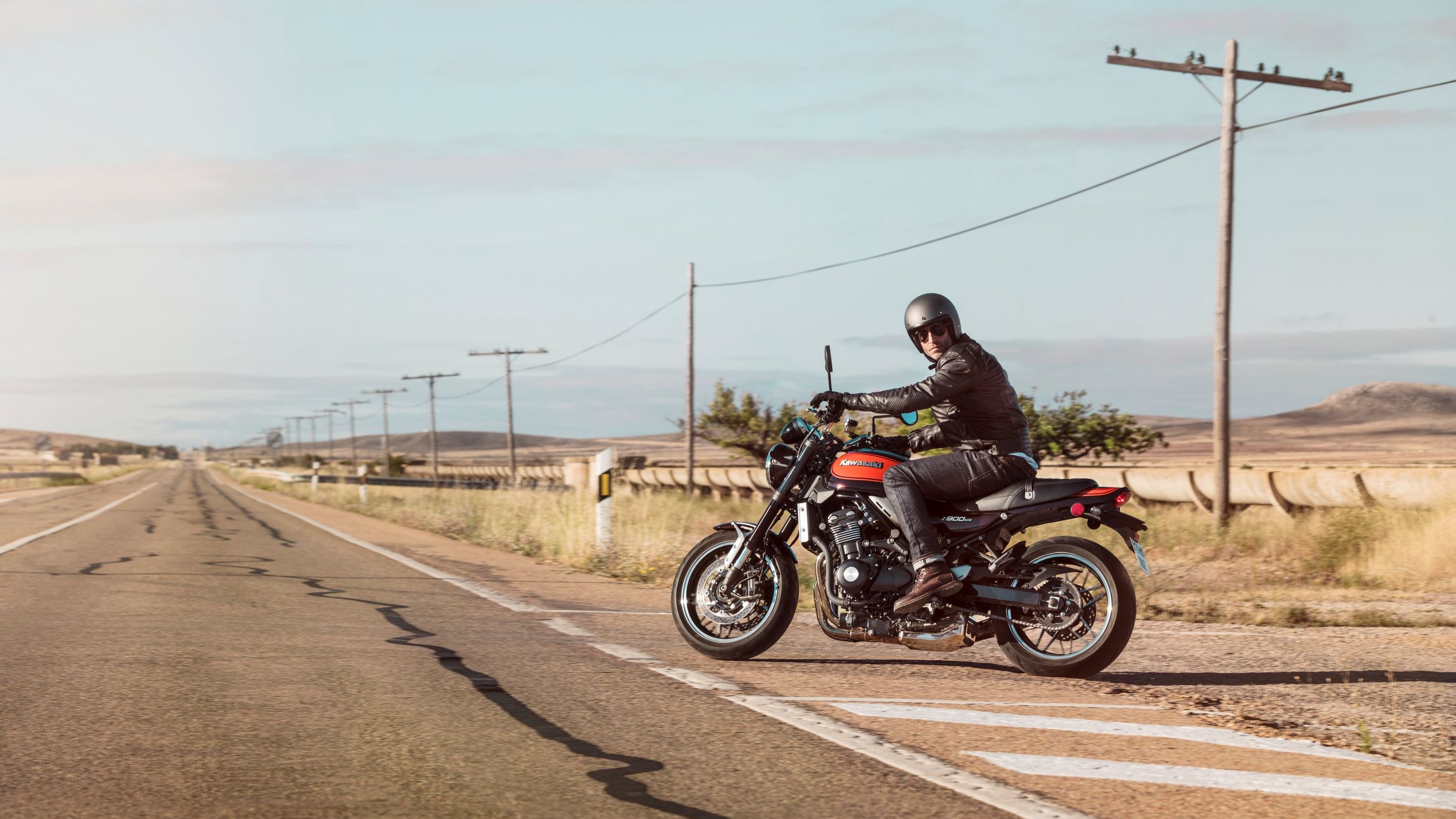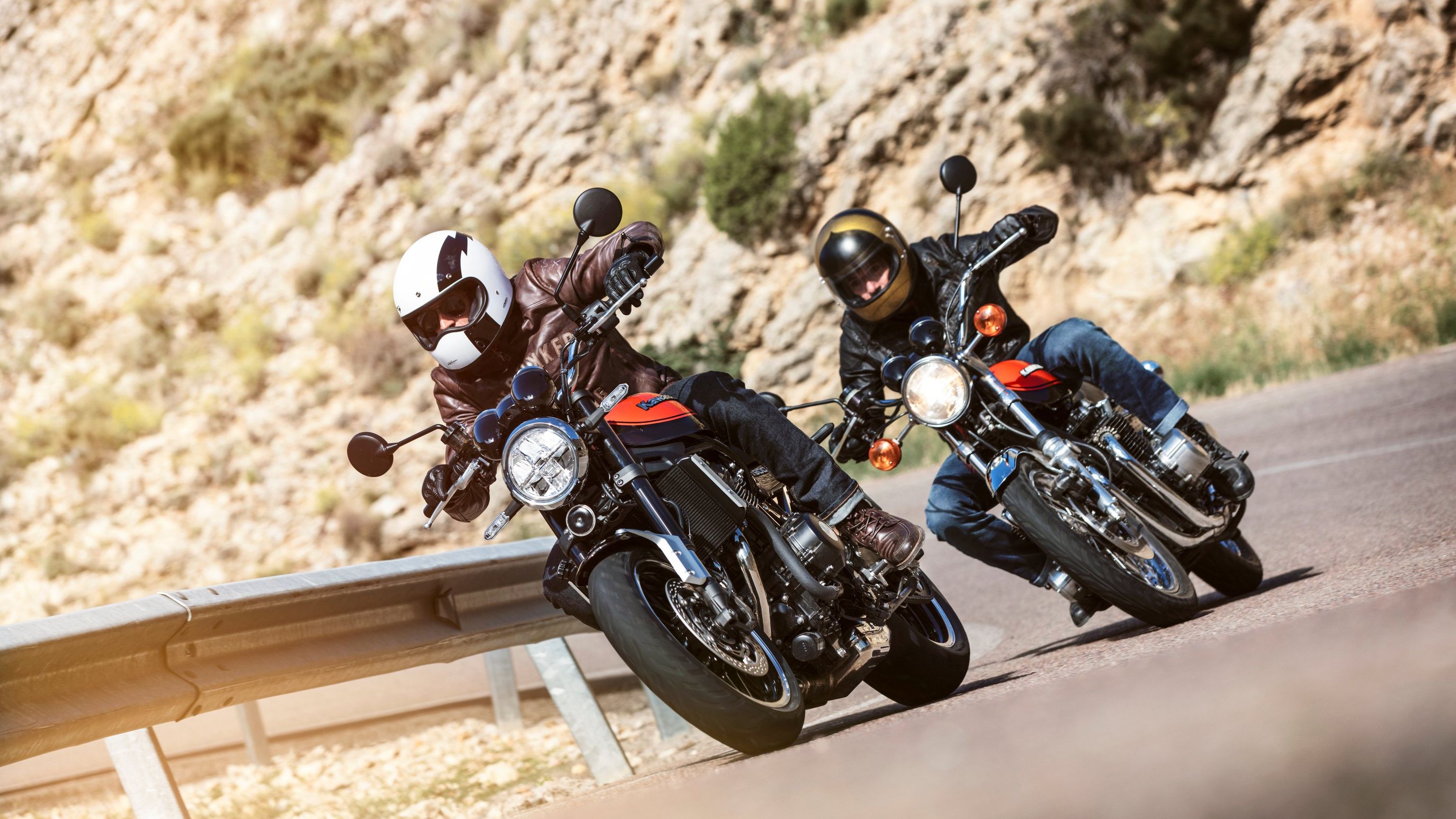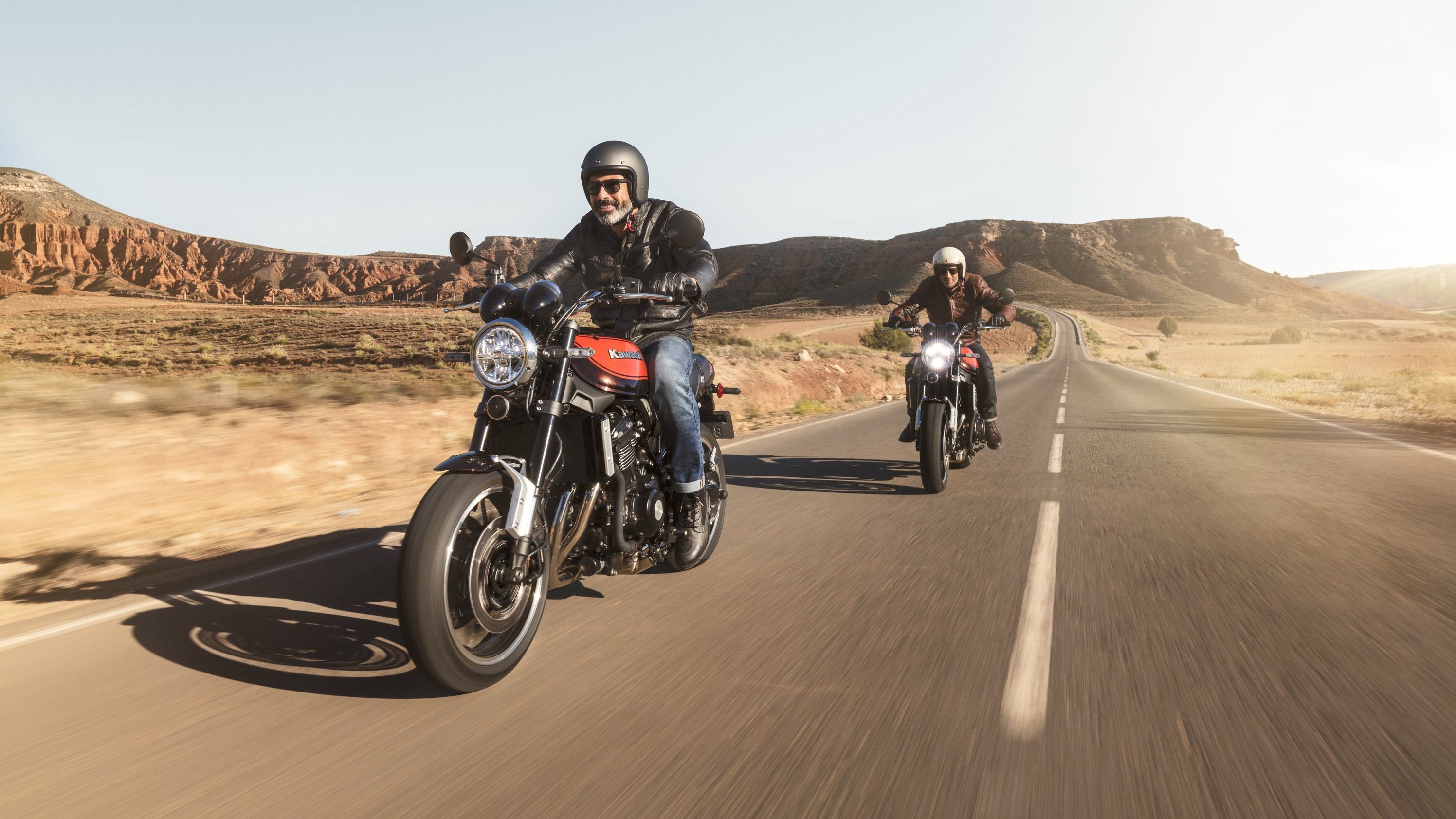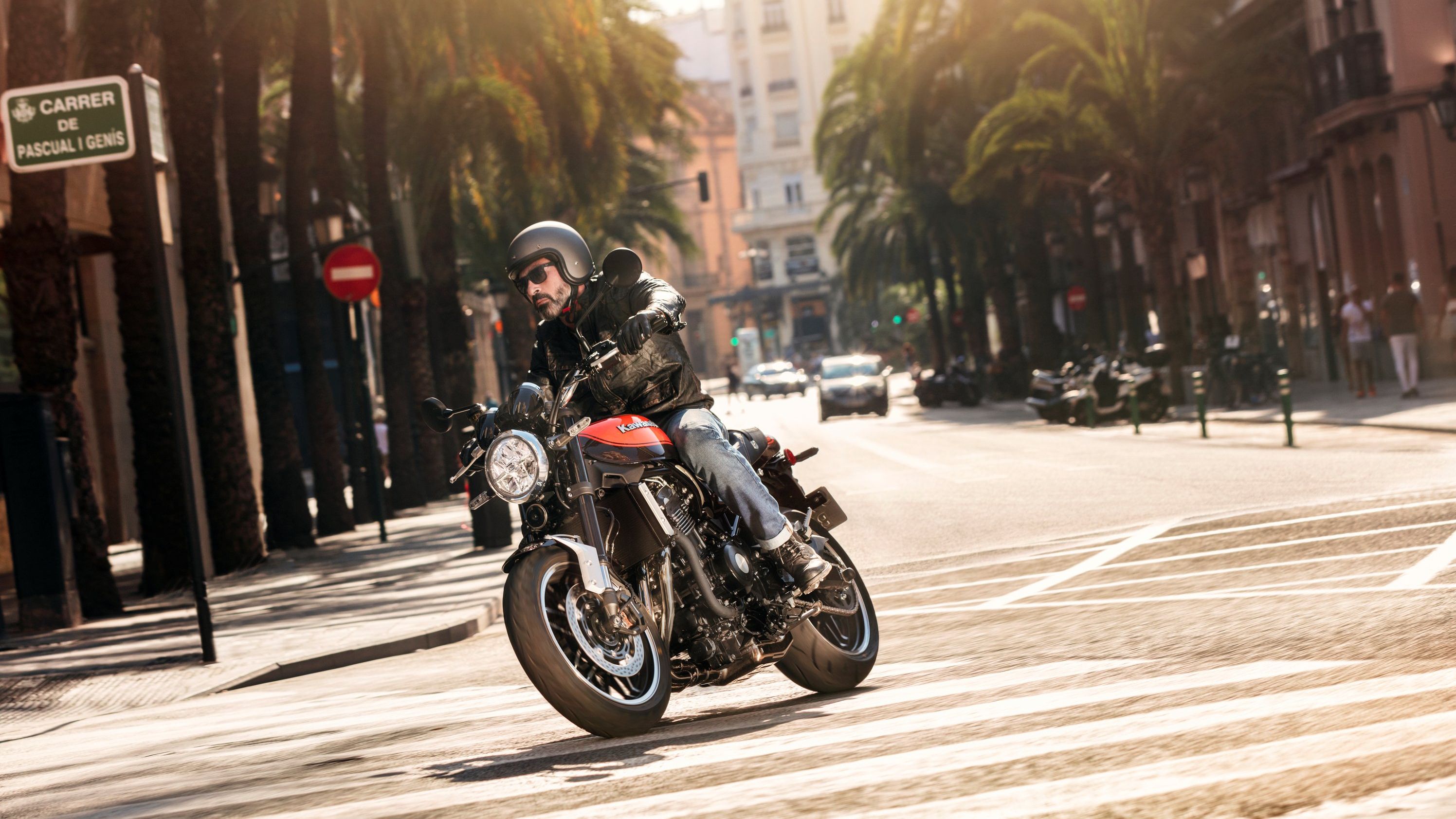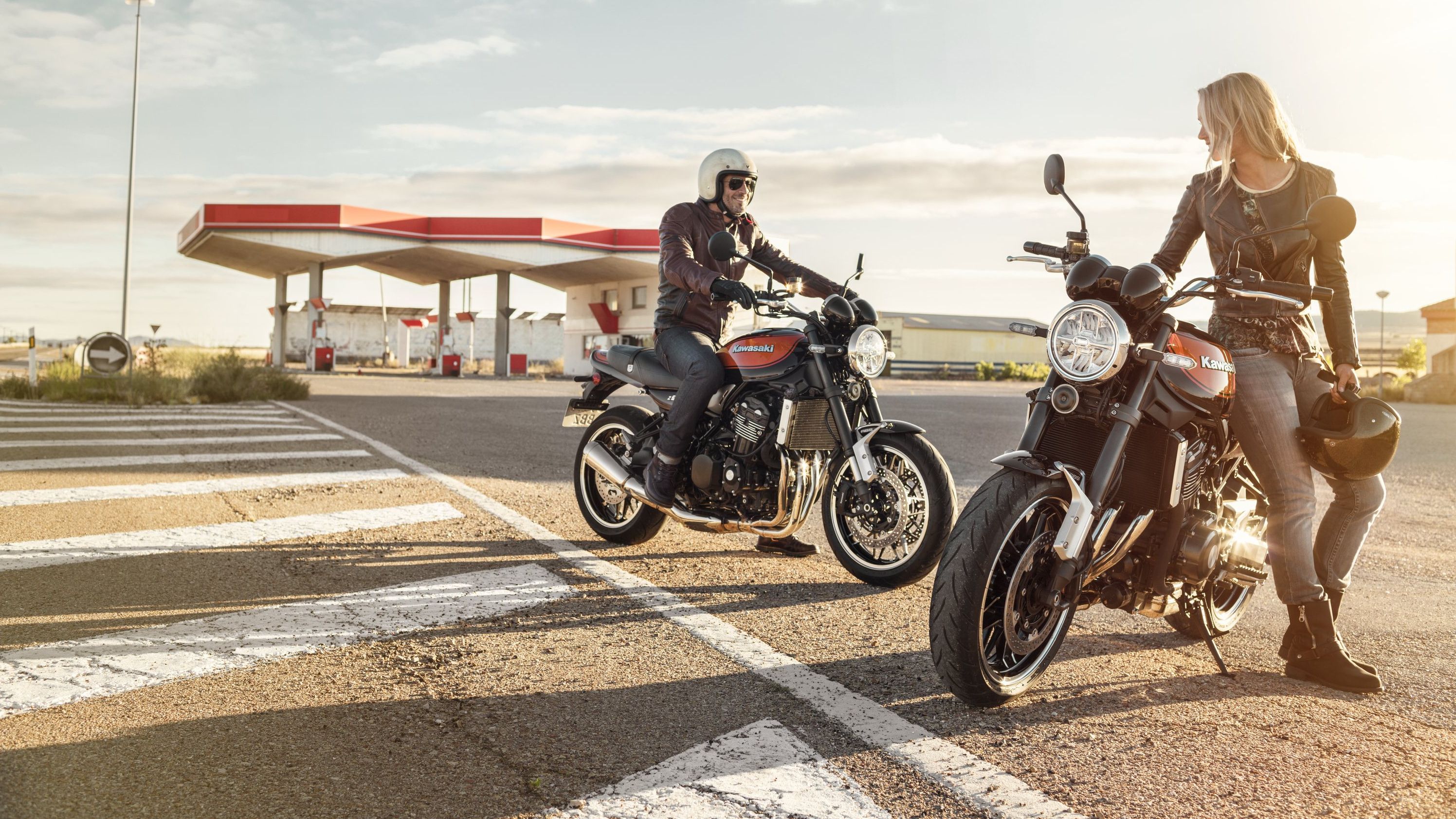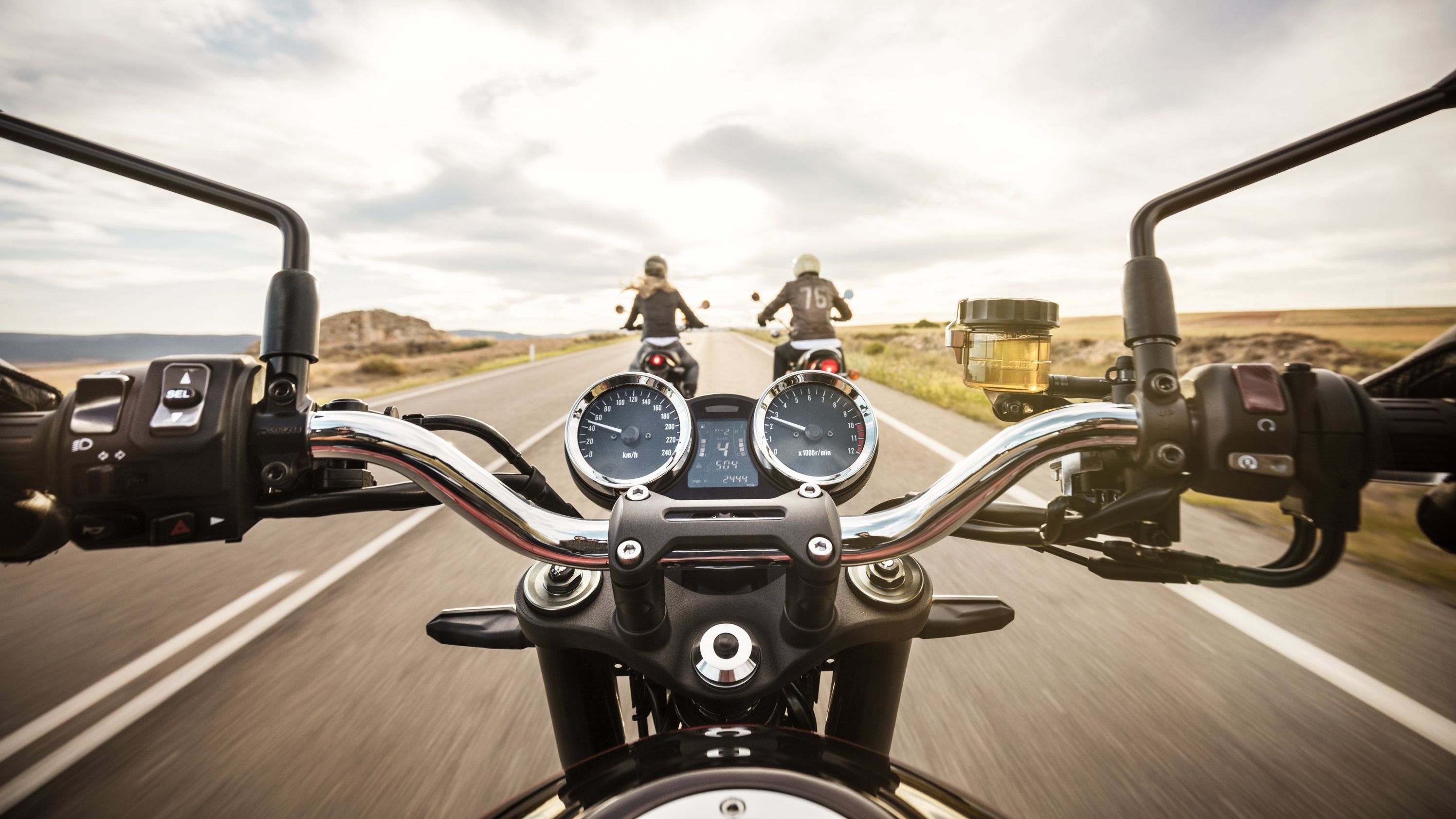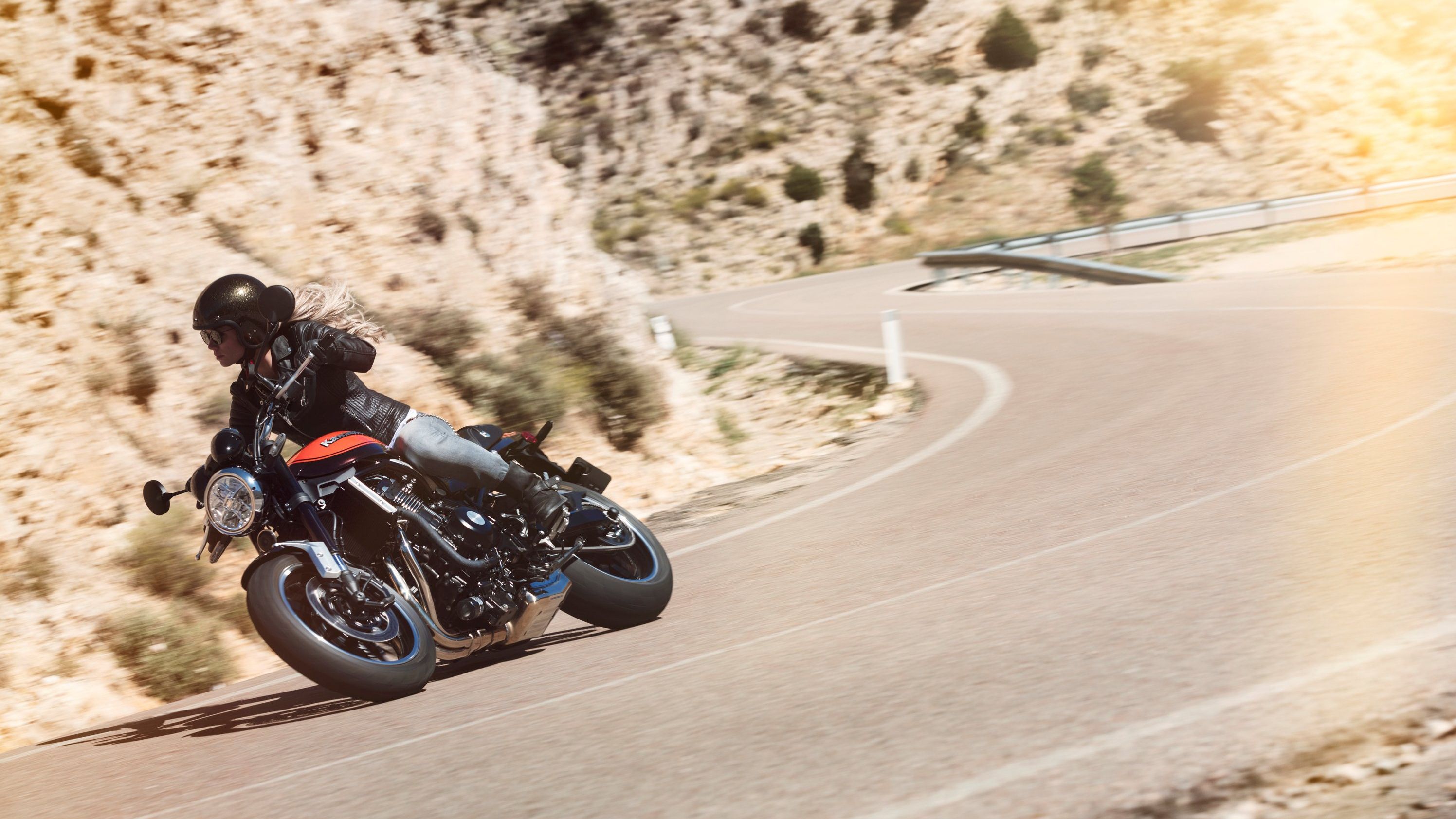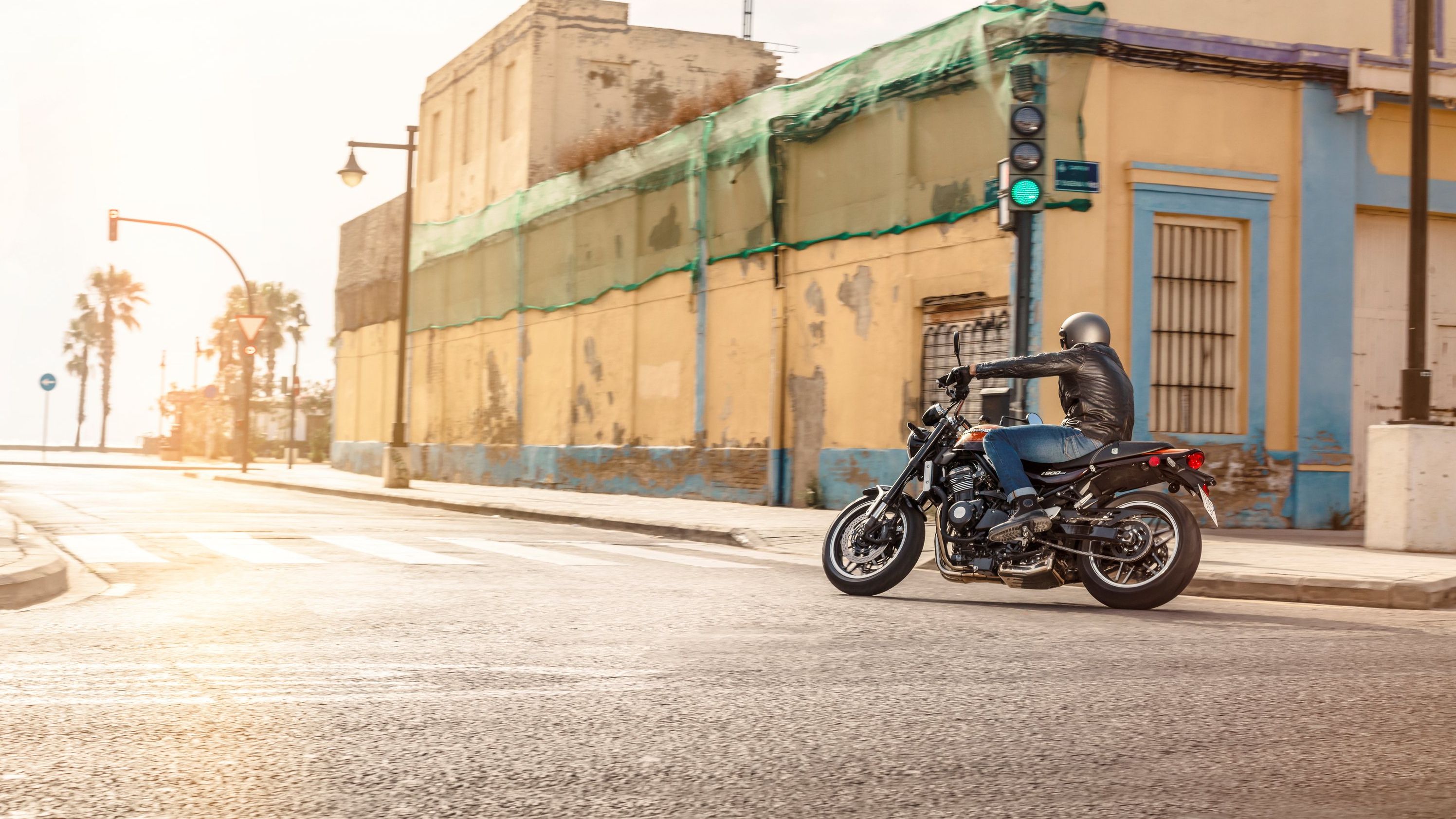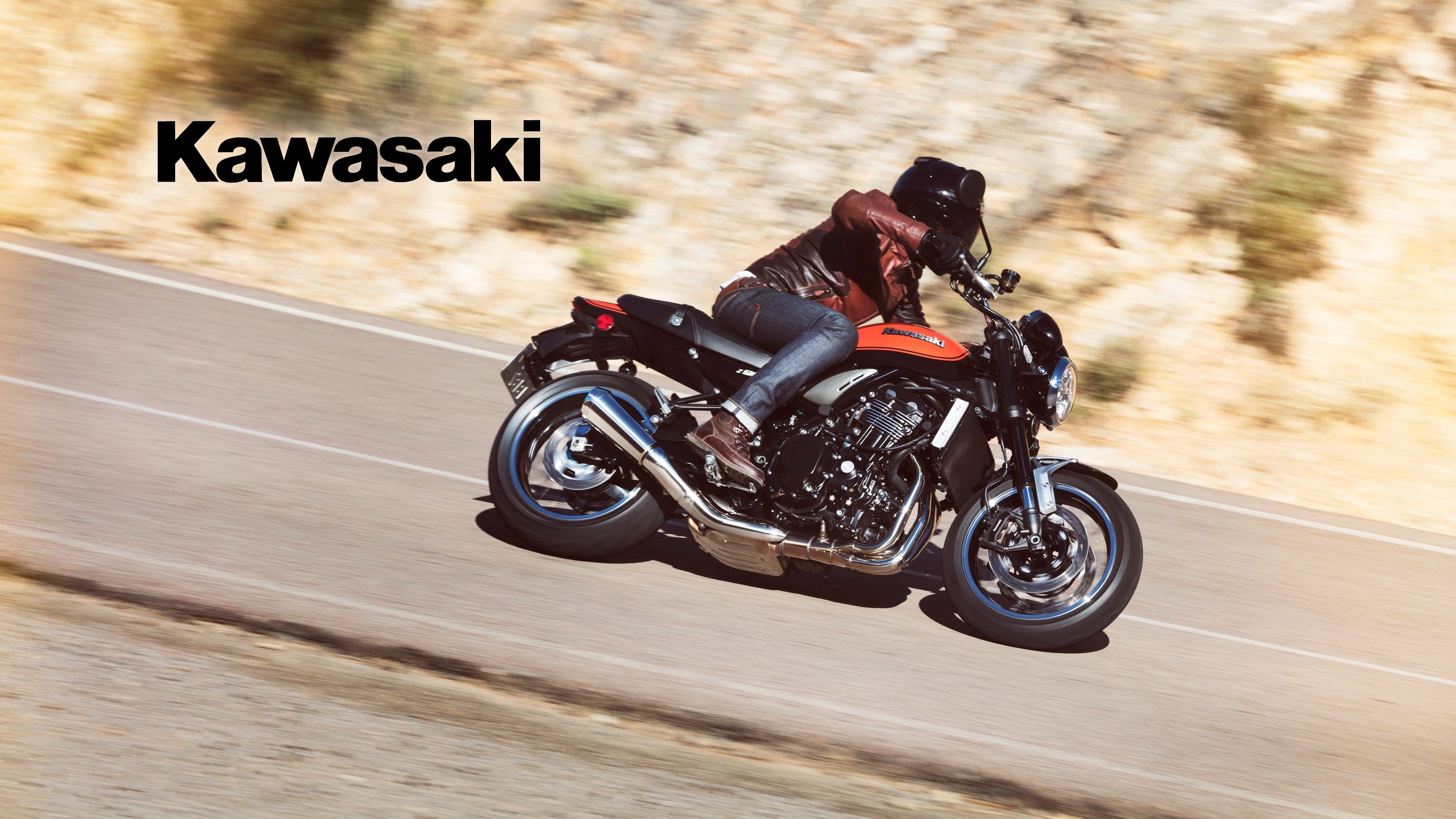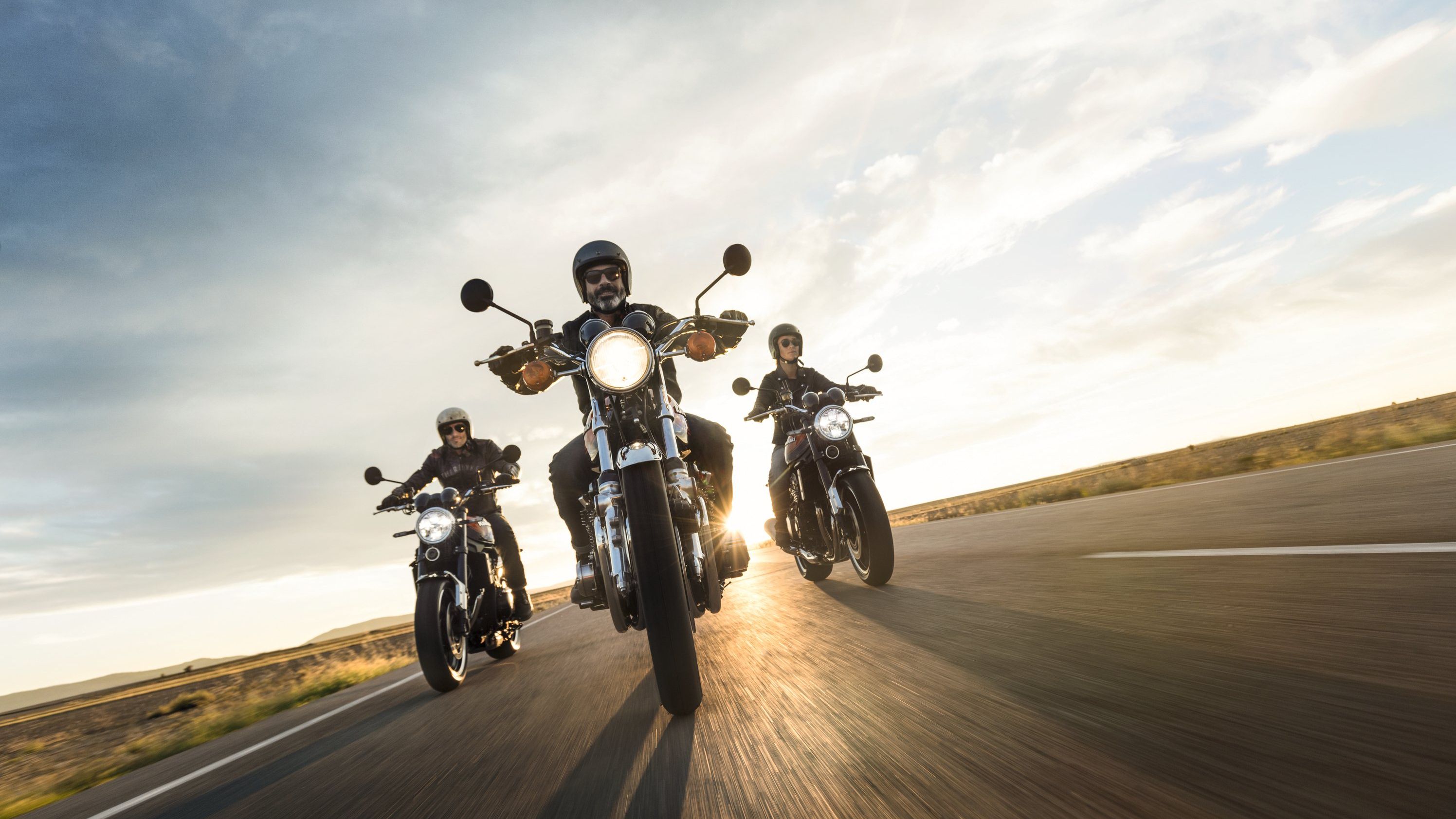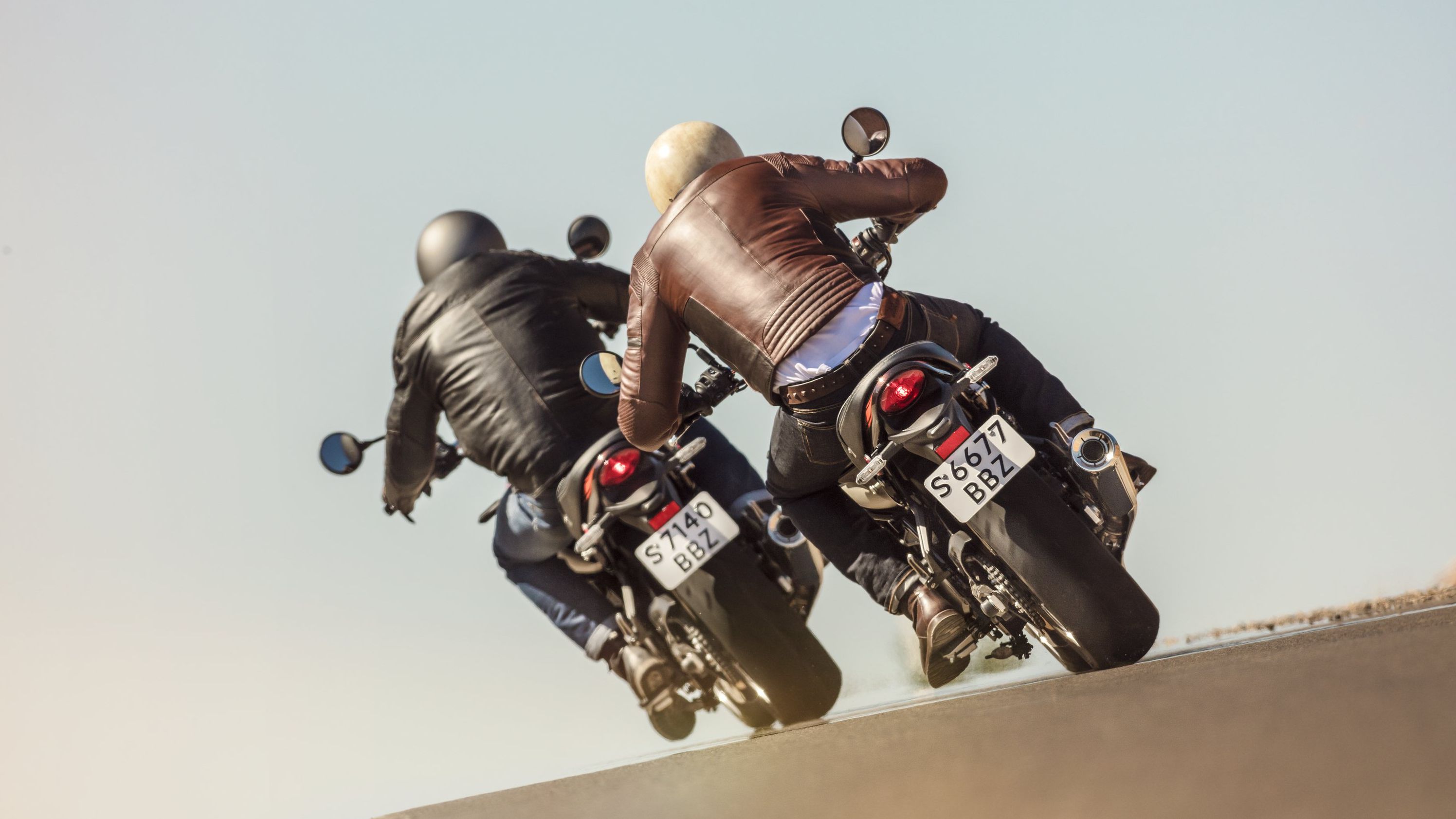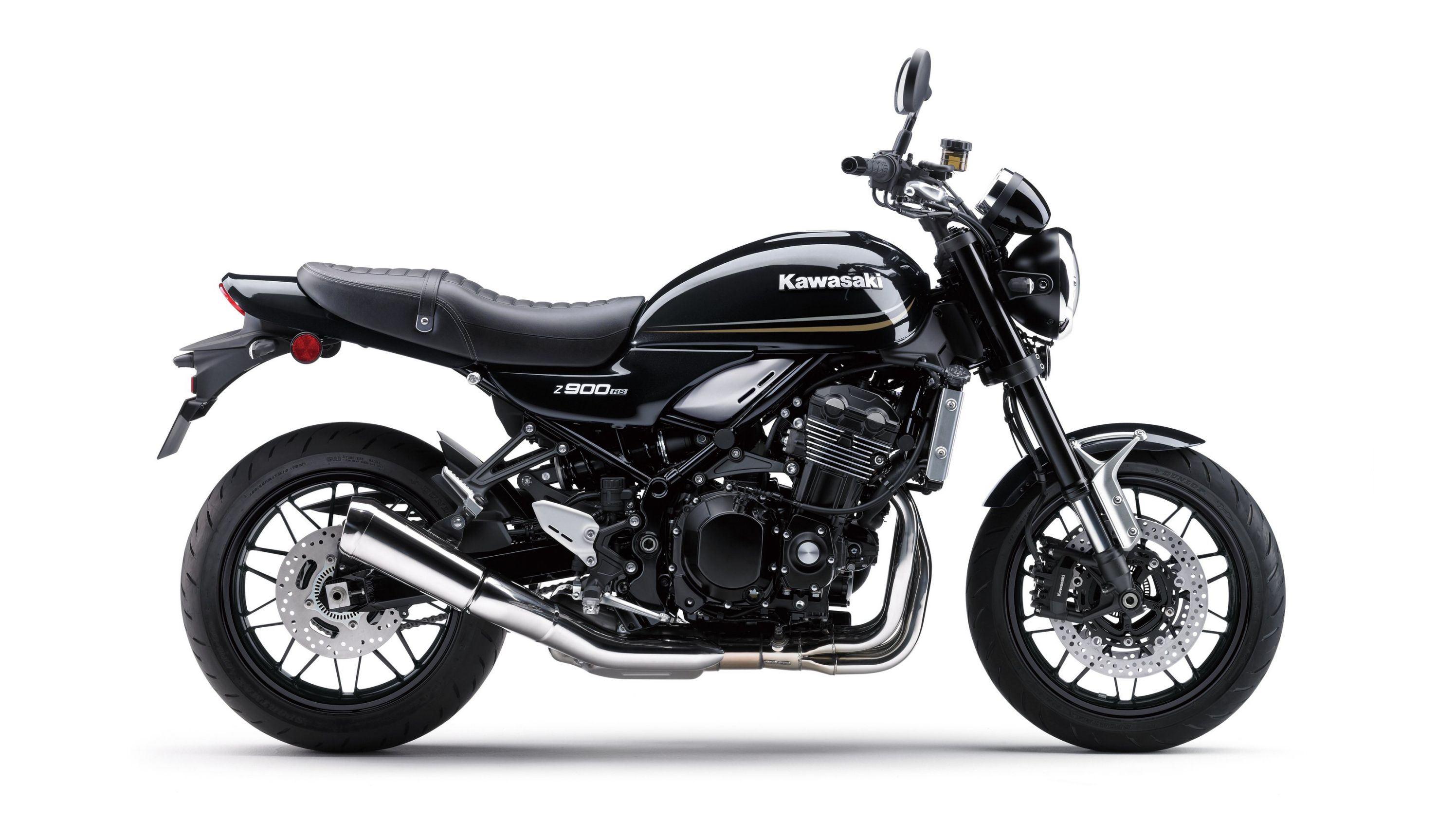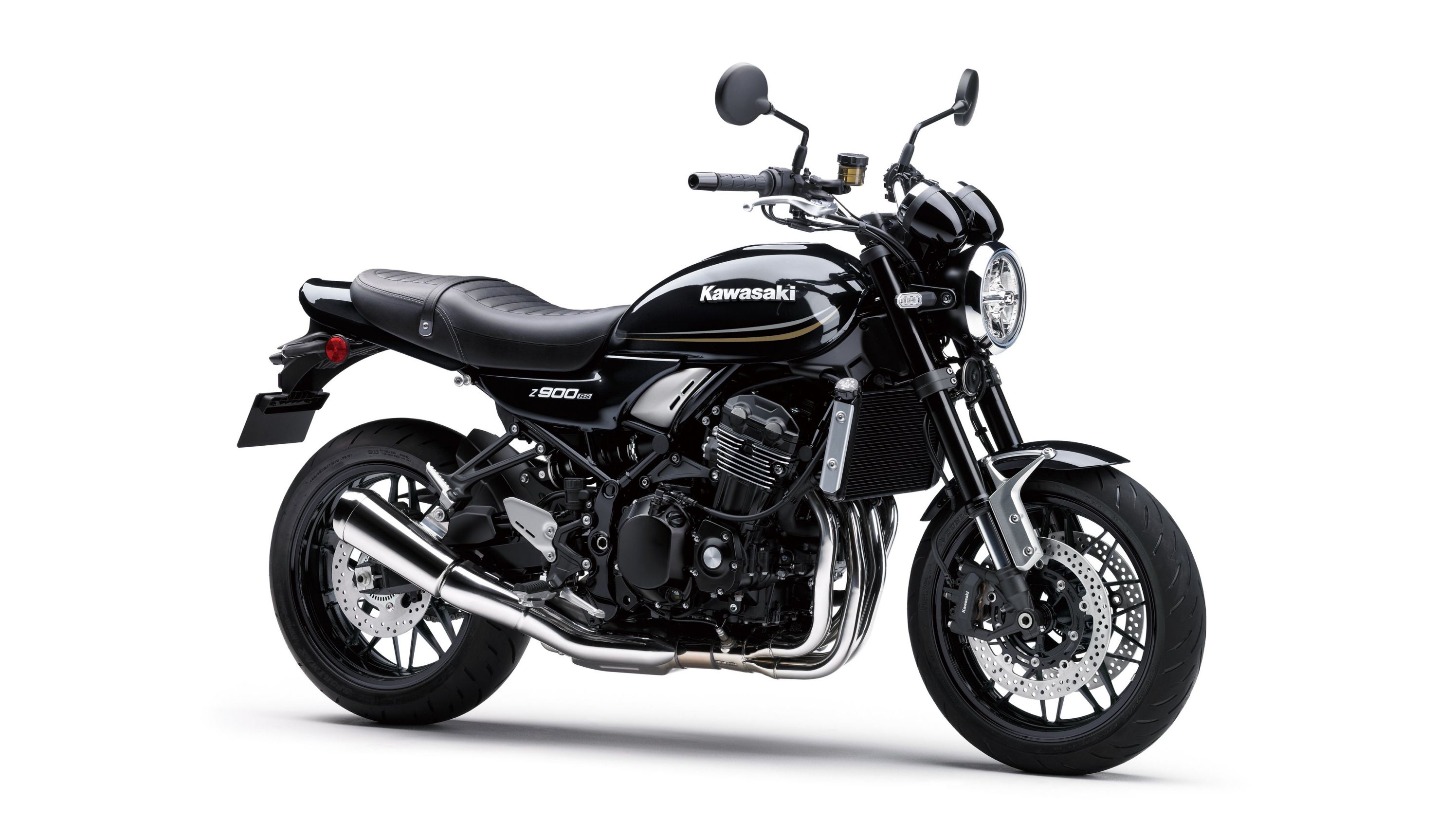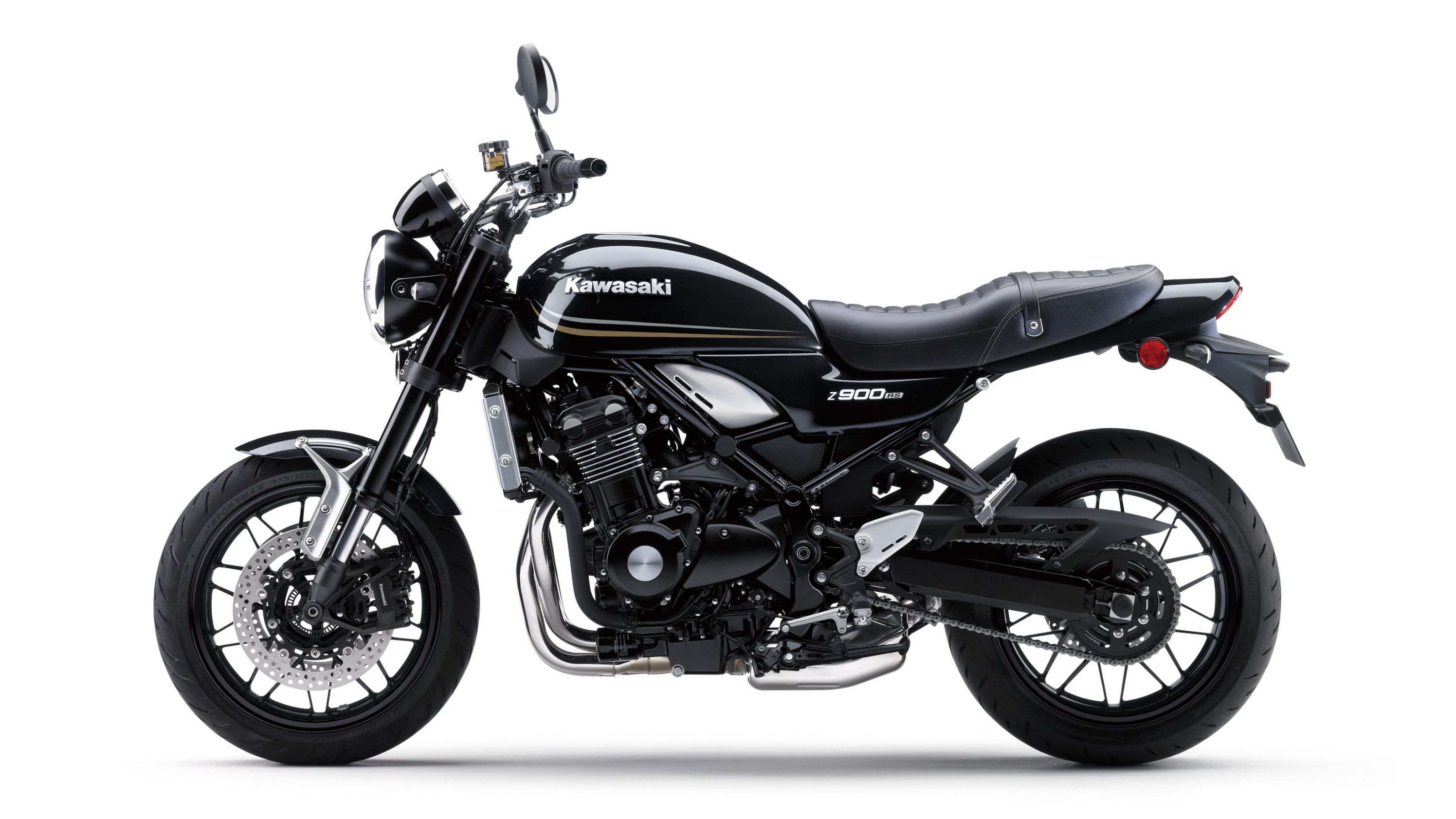The race to grab a slice of the burgeoning Millennial market is heating up, and Kawasaki enters the fray with its sizzlin' hot, retro-style Z900RS. Built as a tribute of sorts to the legendary Z1 superbike, the new-in-2018 RS packs a punch that does its predecessor justice with 111 horsepower ready to go with a twist of the mechanical throttle control. Suspension components are thoroughly modern as well, and at a glance, it seems Kawi has nailed the balance between nostalgia and nouveau with this ride.
2018 - 2019 Kawasaki Z900RS
- Make: Array
- Model: 2018 - 2019 Kawasaki Z900RS
- Engine/Motor: inline-4
- [do not use] Vehicle Model: Array
Kawasaki Z900RS Design
A straight-up UJM; that's the best way to describe it. The flylines are defined by the fuel tank that features a distinctly-classic teardrop shape. It has a slightly fuller profile with a curved dropoff behind the fuel cap, but otherwise the tank is very similar to the original; it's even flanged, something I would usually consider a detriment, but it plays right into the retro vibe quite nicely.
The front fender is much smaller than the original, and of course, the inverted front forks are far different in both look and function from what was available back in 1973, so all of the retro-power in the front end comes from the round headlight housing. Don't be deceived; the can holds super-bright LED emitters that pierce the night, and are quite visible even in sunlight. Chrome trim rings finish the headlight can and the twin round analog instruments, but the bodies join the fork stanchions, tripleclamps and mirrors for a healthy dose of blackout treatment right up front.
The achromatic scheme continues onto the frame, engine, swingarm and sundry items around the machine for a connection to the custom culture of the then-and-now, even though the original was more about the bling. I gotta say I like that, especially since the radiator blends in nicely against the dark backdrop for less of a visual impact, and that's important since the design is trying to emulate a model that was originally powered by an air-cooled engine.
At 31.5 inches tall, the bench seat is low enough to be flatfooted -- or at least tiptoed -- by all but the shortest riders. Footpeg position falls into the jockey slot, but the pullback in the bars give the pilot the option of sitting upright in a relaxed riding position or leaning forward to spread out that front contact patch and employ some body English in the twisties.
Ordinarily, I'd gig the builder for the mudguard-style rear fender that hangs down below what is actually a nicely shaped tail, but the plateholder/turn-signal combo has an overall shape much like the original. Yeah, there it is again, but I challenge you to look at a Z1 next to the Z900 RS, 'cause then you'll see that I'm actually downplaying the similarities just a skosh. Seriously folks, for a non-replica model, the factory stayed pretty darned faithful to the original.
Kawasaki Z900RS Chassis
Though the RS is a variant of the supernaked Z900, it uses a slightly different frame setup that was designed in synergy with the RS's unique body components. In order to keep the stance era-appropriate, the factory dropped the rear end and lifted the front. Naturally, that artificially increased the rake and trail to the detriment of the handling. The engineers tightened everything back up with a 6 mm increase in the tripletree offset giving the RS a 25.4-degree rake with 3.5 inches of trail to deliver some pretty crisp handling in the corners while remaining well-behaved in the straights.
A Trellis frame supports the assembly. For weight savings, the engine serves to complete the circuit as a stressed member in order to eliminate a section of the downtube/cradle area. Up front, the inverted, KYB 41 mm forks give the RS away as a modern creation, and they come with modern features in the form of the adjustable spring preload and compression/rebound damping functions. At the other end, the KYB horizontal-mount shock tames the swingarm motion from its inconspicuous little hidey-hole, and it comes with adjustable preload and rebound damping.
The brakes mean business with a pair of 300 mm discs and four-piston monobloc calipers up front and a 250 mm disc and single-pot anchor in back. Overkill? Maybe, but it comes with ABS protection, so you can use those brakes with confidence.
|
Frame Type: |
Tubular, diamond |
|
Rake/Trail: |
25.4°/3.5 in |
|
Front Suspension / Wheel Travel: |
Inverted telescopic fork (10-way) with adjustable compression and rebound (12-way) damping, spring preload/4.7 in |
|
Rear Suspension / Wheel Travel: |
Horizontal back-link swingarm with stepless adjustable rebound damping and spring preload/5.5 in |
|
Front Tire: |
120/70 ZR17 Dunlop GPR-300F |
|
Rear Tire: |
180/55 ZR17 Dunlop GPR-300 |
|
Front Brakes: |
Dual disc ABS |
|
Rear Brakes: |
Single disc ABS |
Kawasaki Z900RS Drivetrain
Kawi borrowed the four-cylinder powerplant from its Z900, but tuned it for a stronger mid-range and somewhat-tamer power delivery. The 73.4 mm bore and 56 mm stroke gives the transverse-mount mill its 948 cc displacement, but the factory took some of the fire out of it by reducing the compression ratio to 10.8-to-1. This won't get you cheaper gas, but it does make for a friendlier power delivery.
Camshaft duration was reduced to move the powerband south a bit, and the crankshaft bulked up by 12-percent to smooth out the pulses and aid that mid-range grunt. As for the grunt itself, the factory measures it at 72 pound-feet at 6,500 rpm backed up by 111-horsepower. Unfortunately, the throttle feels a bit all or nothing, so smooth transitions will come only with practice. The good news is that the stock traction control's setting number 2 smooths that out somewhat, and the two-channel TC couples with the ABS for some solid traction protection.
Engine power filters through the six-speed transmixer with a slip-and-assist clutch to provide a third layer of traction protection and limits the backtorque that makes it up to the engine. Though the throttle is mechanical in its input, an ECU processes all the relevant data and actuates a set of sub-throttles in the 36 mm thottle-bodies to smooth out the differences between power supply and demand.
Purists wail about the 4-into-1 exhaust, but in a first, Kawi actually engineered the exhaust note, and I submit that you don't have to look at the exhaust while you're on the bike, but you sure have to listen to it. Consider that before you judge the looks or infidelity of the exhaust configuration too harshly.
|
Engine: |
4-stroke, 4-cylinder, DOHC, 16-valve, liquid-cooled |
|
Displacement: |
948 cc |
|
Bore x Stroke: |
73.4 mm x 56.0mm |
|
Compression ratio: |
10.8:1 |
|
Fuel System: |
DFI® with Keihin 36 mm throttle bodies |
|
Ignition: |
TCBI with electronic advance |
|
Transmission: |
6-speed, return shift |
|
Final Drive: |
Sealed chain |
Kawasaki Z900RS Pricing
Kawasaki dropped Metallic Sparkle Black for 2019 and just offers the classic Candytone Brown/Candytone Orange that ties into the '73 Z1. MSRP holds steady at $11,199 for the Candytone colorway, and, as always, Kawi provides a 12-month warranty and gives the option of buying up to four additional years of coverage.
|
Warranty: |
12 Month Limited Warranty (with optional Kawasaki Protection Plus™ 12, 24, 36 or 48 months |
|
Colors: |
|
|
└ 2018: |
Candytone Brown/Candytone Orange, Metallic Spark Black |
|
└ 2019: |
Candytone Brown/Candytone Orange |
|
Price: |
|
|
└ 2018: |
$10,999 |
|
└ 2019: |
$11,199 |
Kawasaki Z900RS Competitors
Retro-power is undeniable whether it's a neo-retro interpretation or a somewhat-historical reproduction, so I went to the contemporary end of the spectrum with the XSR900 from Yamaha's “Faster Sons” lineup. No doubt about it, the retro angle was more of a guideline than an actual rule, but its still manages to shine through all the new.
Yamaha XSR900
Sporty, inverted forks float the XSR900 to match the Z900 RS, and while the Kawi would certainly look more retro with rwu forks, I'm OK with the blackout usd stems for the performance they bring. Oh, and the fact that they're preload- and rebound-adjustable doesn't hurt. Knee pockets shape the rear of the Yamaha's fuel tank, in fact, a lot of the modern look comes directly from the angular tank that strikes a sharp contrast against the classic smooth teardrop on the Kawi.
I'm calling the brakes a wash since both run dual front anchors with ABS protection. The Tuning Fork Company runs an 847 cc triple against Kawi's 948 cc four-banger, but power is more or less a wash at 113 horsepower and 64.5 pound-feet of torque versus 111/72, respectively. Priced at $9,499, the XSR900 is positioned well to challenge the Z900RS ABS, but if the retro style is important to you, that extra couple grand is liable to be worth it.
Read our full review of the Yamaha XSR900.
He Said
“Kawi really did a good job with this machine. I love the classic looks, the lines of the teardrop tank, the whole bit. Most of all, I love that younger buyers are interested in things from my own youth, I mean, this is what a Japanese motorcycle looked like to me when I was a wee lad. I look forward to more of this, from more and more manufacturers.”
She Said
My wife and fellow motorcycle writer, Allyn Hinton, says, “This modern classic field gets more populated every year, it seems. The look is vintage-inspired, which harkens back to a time before things got super-complicated. Even though the technology is there, it doesn't scream techno-modern. I thought the RS was going to be a Z900 with some upgraded options and fancy saddle stitching, but it's really its own machine. I have to wonder why it's called a Z900 at all. It really should be a Z1something, don't you think? Since that's what it is modeled after, give it that name. This is a much more laid back bike than the Z900. It's comfortable and the rider triangle is very relaxed. If the Z900 is too sportbike-like for your liking, give the Z900RS a look.”
Kawasaki Z900RS Specifications
|
Engine & Drivetrain: |
|
|
Engine: |
4-stroke, 4-cylinder, DOHC, 16-valve, liquid-cooled |
|
Displacement: |
948 cc |
|
Bore x Stroke: |
73.4 mm x 56.0mm |
|
Compression ratio: |
10.8:1 |
|
Fuel System: |
DFI® with Keihin 36mm throttle bodies |
|
Ignition: |
TCBI with electronic advance |
|
Transmission: |
6-speed, return shift |
|
Final Drive: |
Sealed chain |
|
Chassis: |
|
|
Frame Type: |
Tubular, diamond |
|
Rake/Trail: |
25.4°/3.5 in |
|
Front Suspension / Wheel Travel: |
Inverted telescopic fork (10-way) with adjustable compression and rebound (12-way) damping, spring preload/4.7 in |
|
Rear Suspension / Wheel Travel: |
Horizontal back-link swingarm with stepless adjustable rebound damping and spring preload/5.5 in |
|
Front Tire: |
120/70 ZR17 Dunlop GPR-300F |
|
Rear Tire: |
180/55 ZR17 Dunlop GPR-300 |
|
Front Brakes: |
Dual disc ABS |
|
Rear Brakes: |
Single disc ABS |
|
Dimensions & Capacities: |
|
|
Overall Length: |
83.1 in |
|
Overall Width: |
34.1 in |
|
Overall Height: |
46.5 in |
|
Ground Clearance: |
5.3 in |
|
Seat Height: |
31.5 in |
|
Curb Weight: |
471.9 lb |
|
Fuel Capacity: |
4.5 gal |
|
Wheelbase: |
58.1 in |
|
Top Speed: |
150 mph (est) |
|
Details: |
|
|
Warranty: |
12 Month Limited Warranty (with optional Kawasaki Protection Plus™ 12, 24, 36 or 48 months |
|
Colors: |
|
|
└ 2018: |
Candytone Brown/Candytone Orange, Metallic Spark Black |
|
└ 2019: |
Candytone Brown/Candytone Orange |
|
Price: |
|
|
└ 2018: |
$10,999 |
|
└ 2019: |
$11,199 |
Further Reading
Kawasaki Z900
See our review of the Kawasaki Z900.
Kawasaki Z900RS CAFE
See our review of the Kawasaki Z900RS CAFE.


